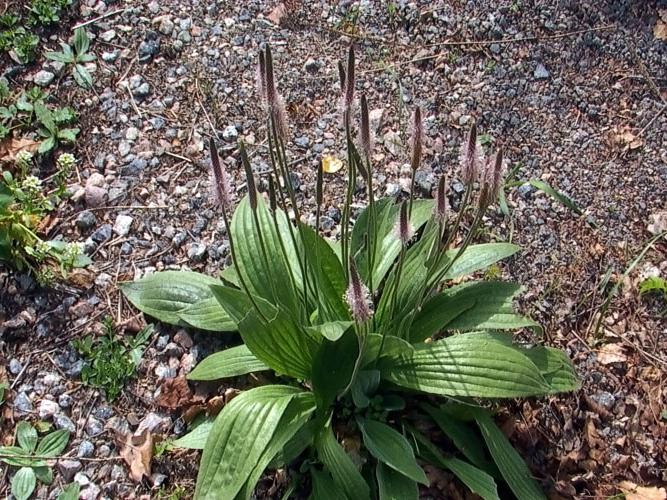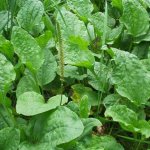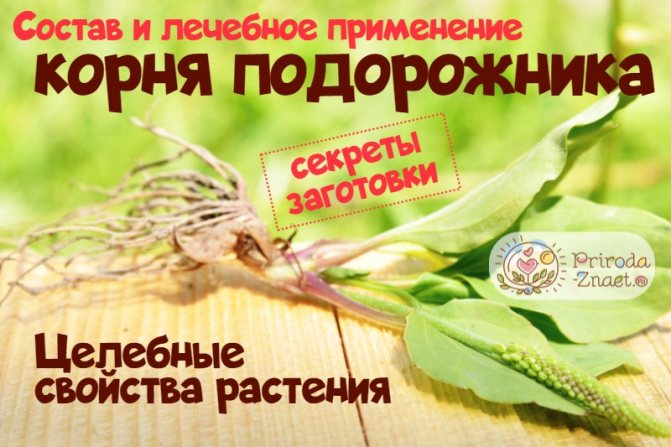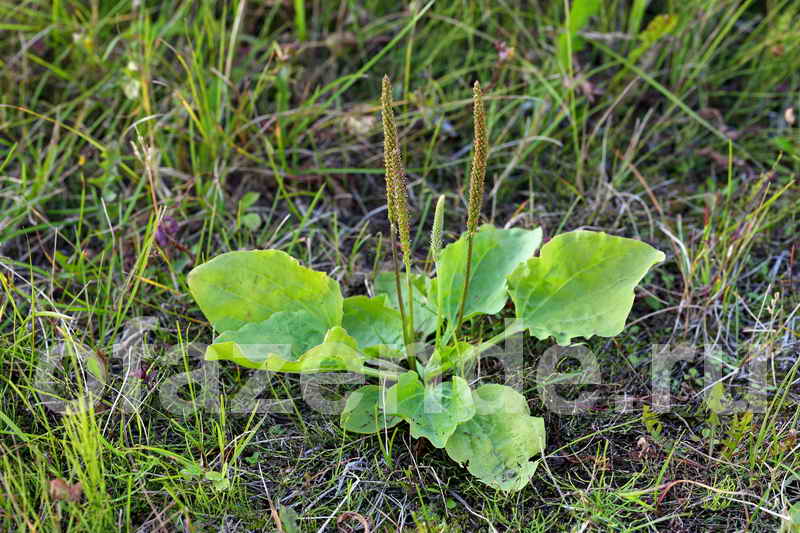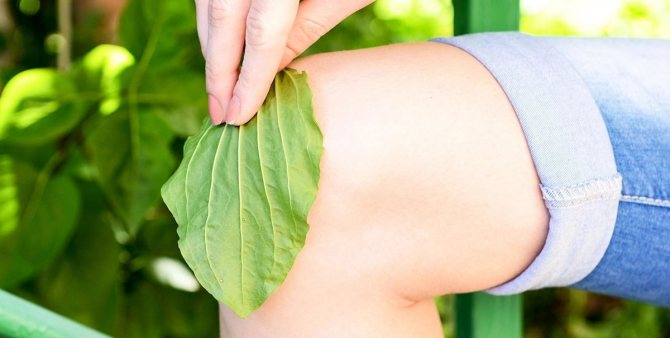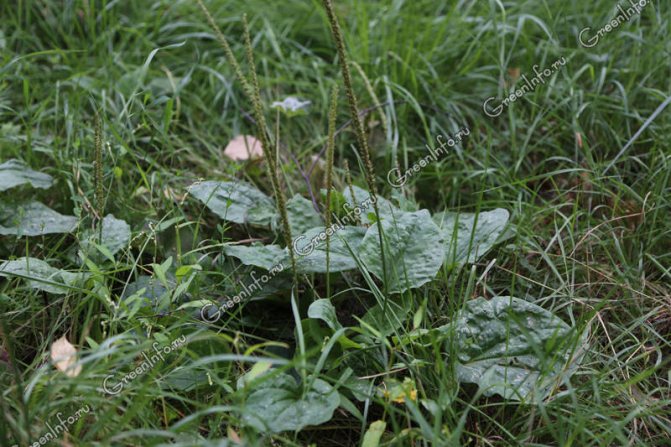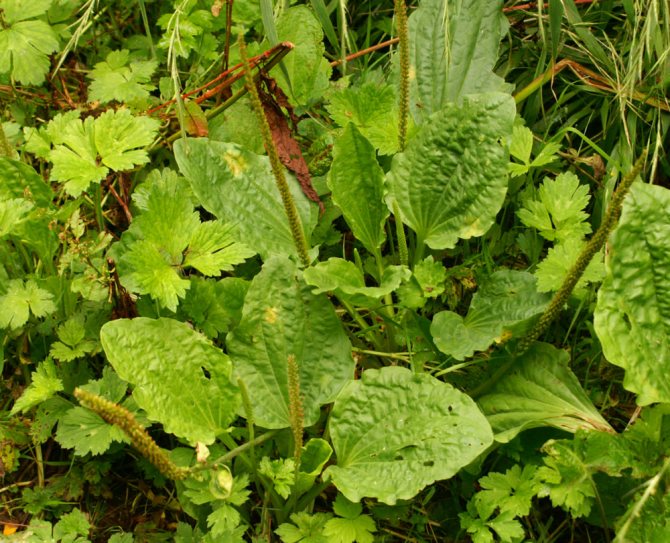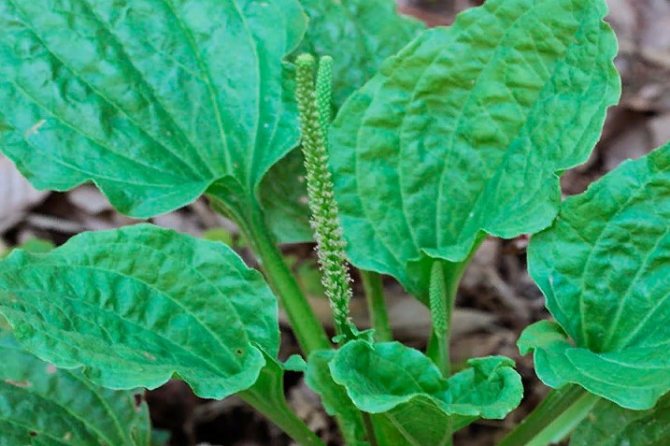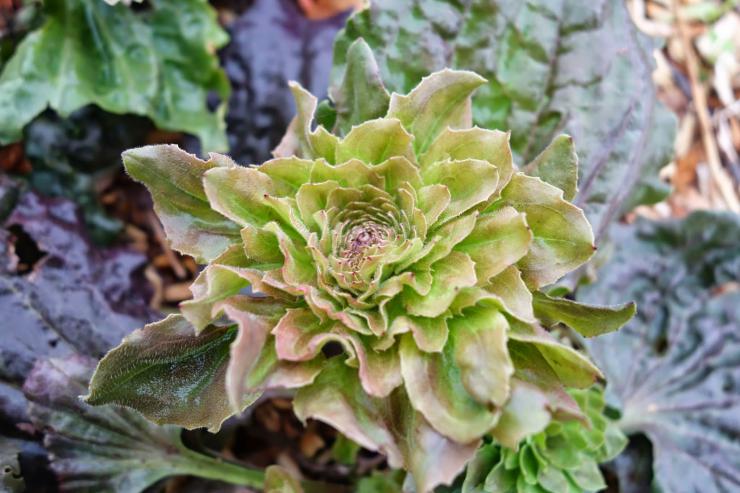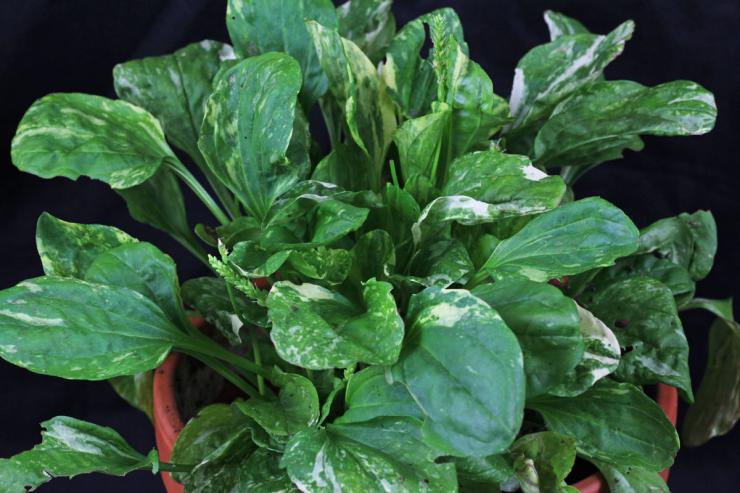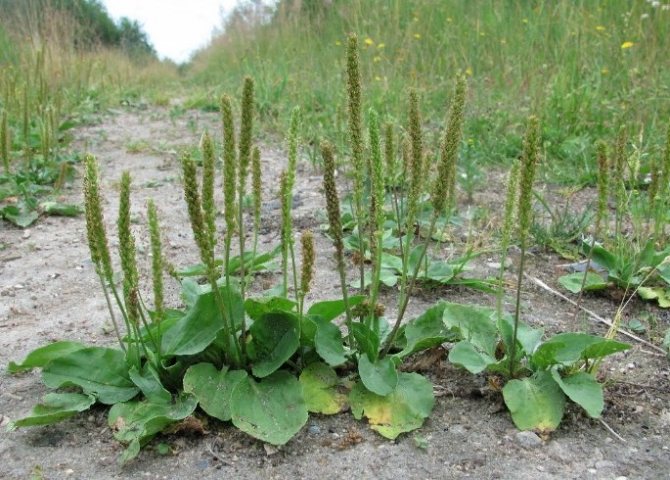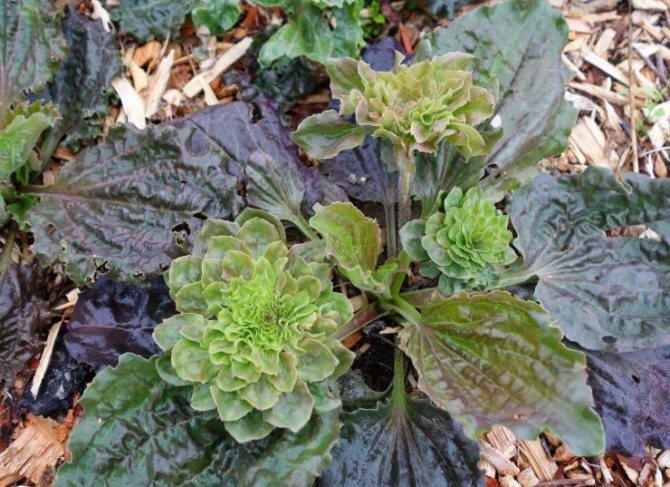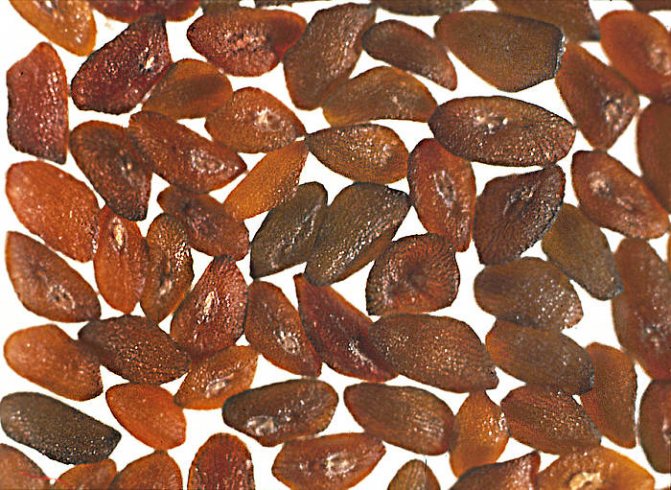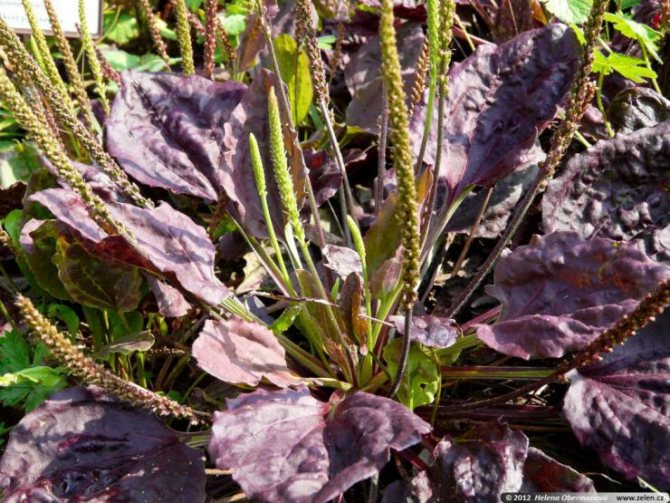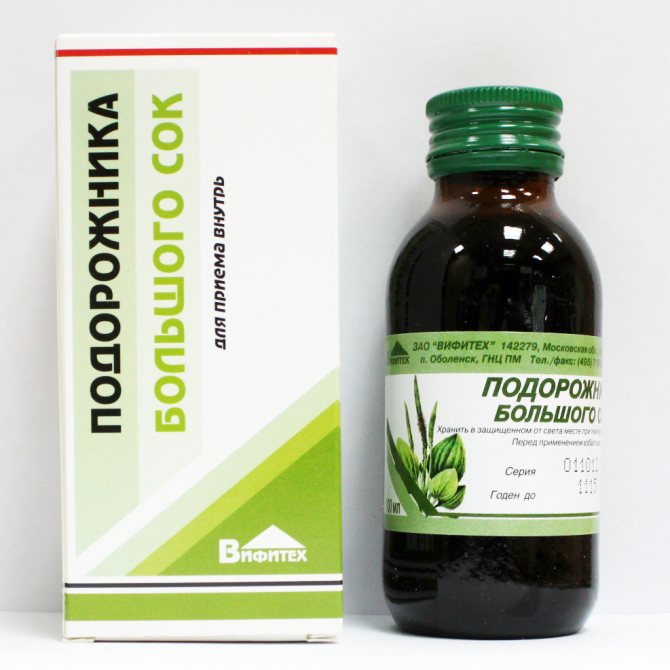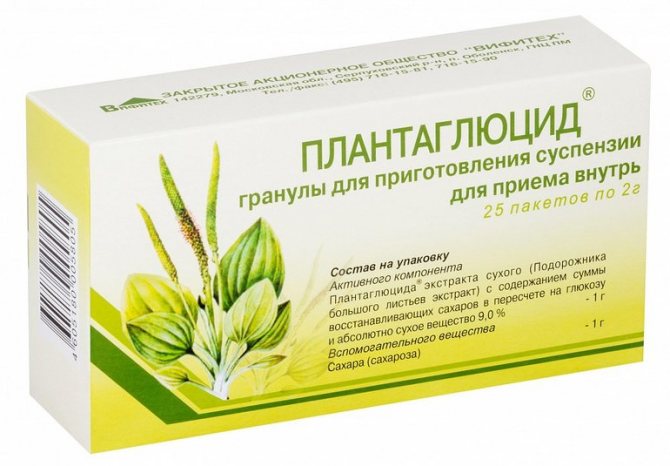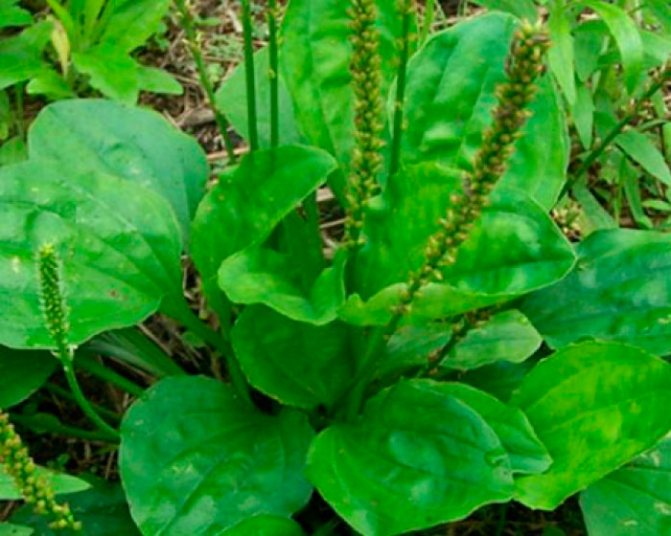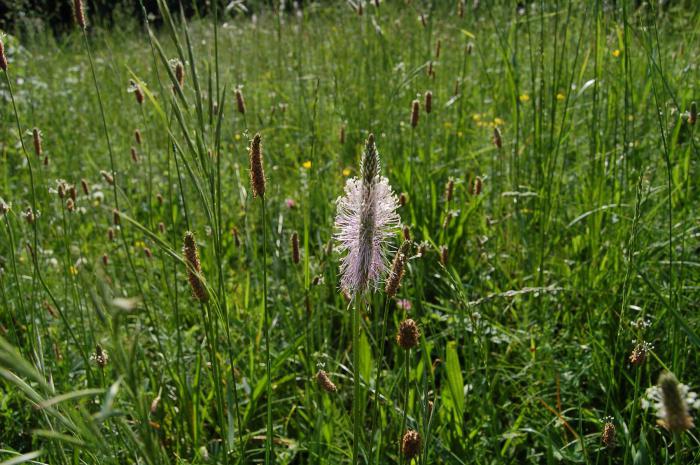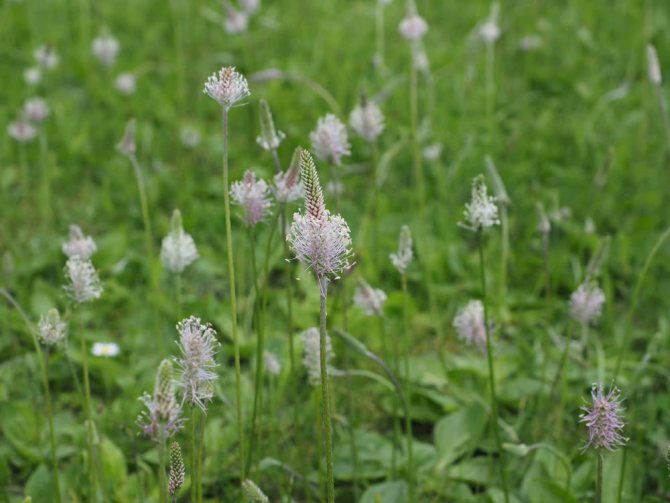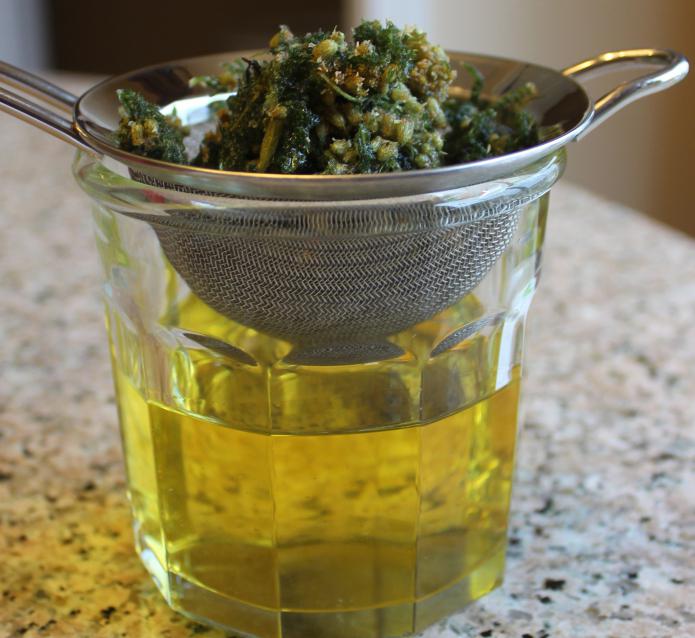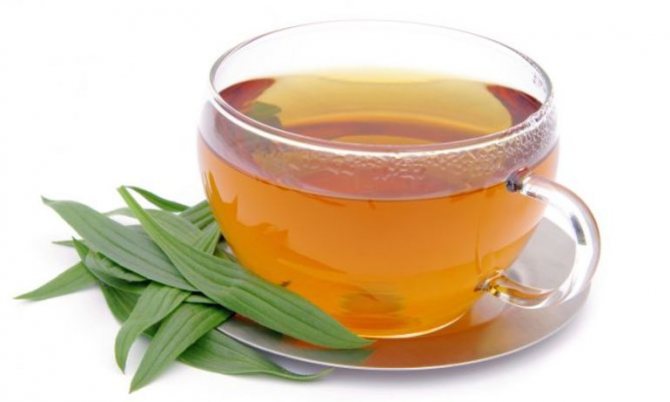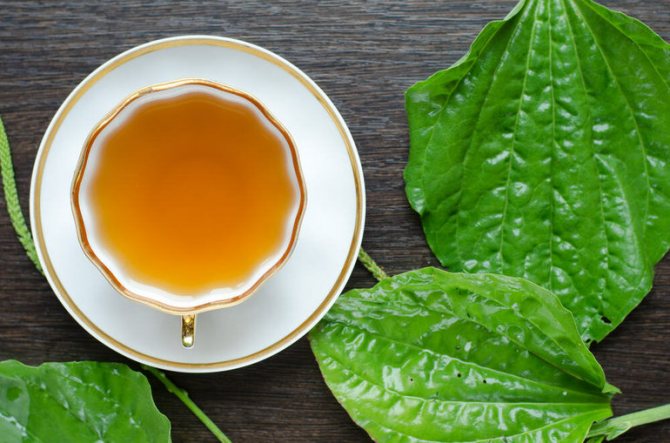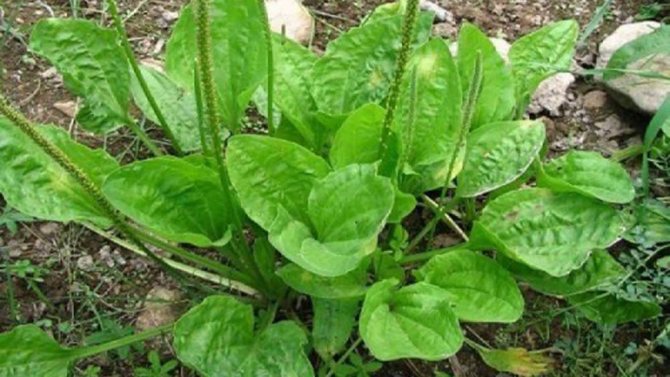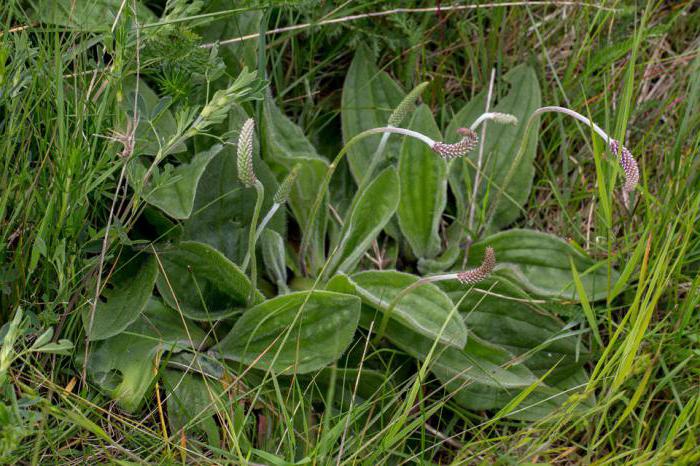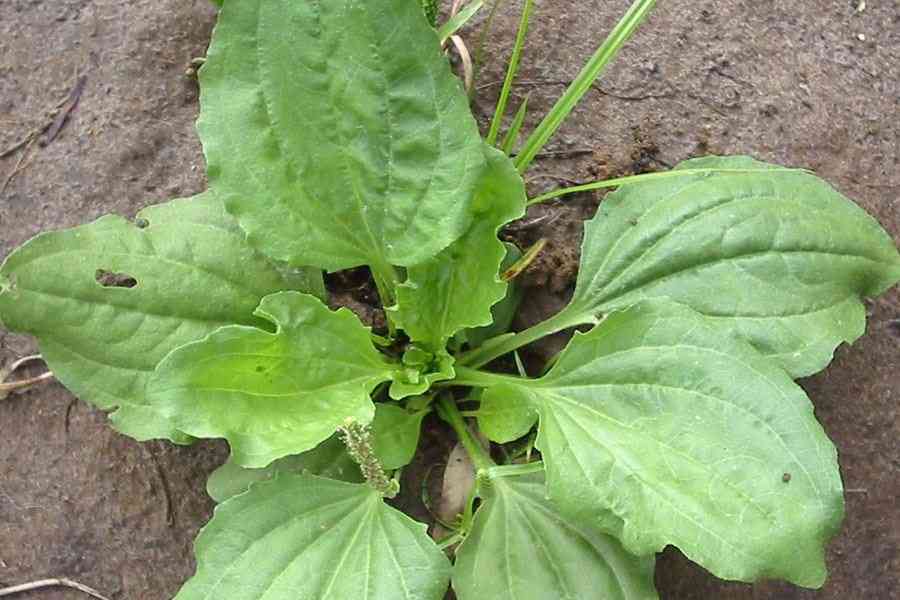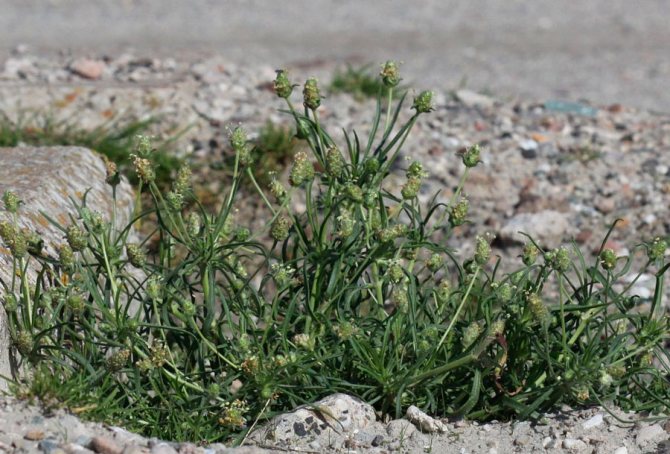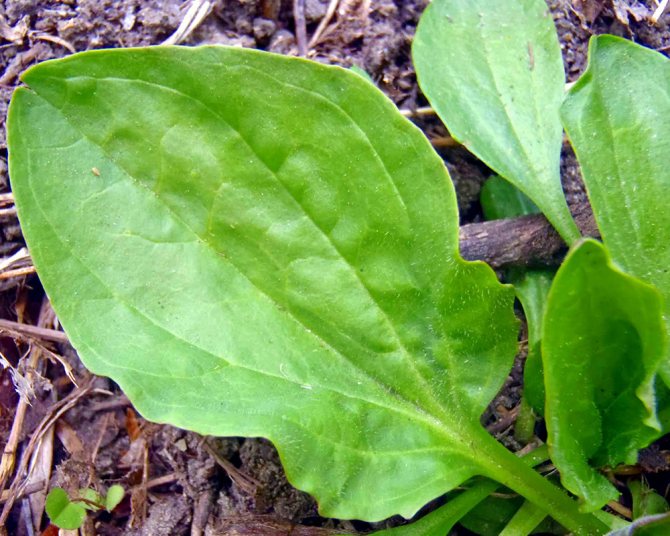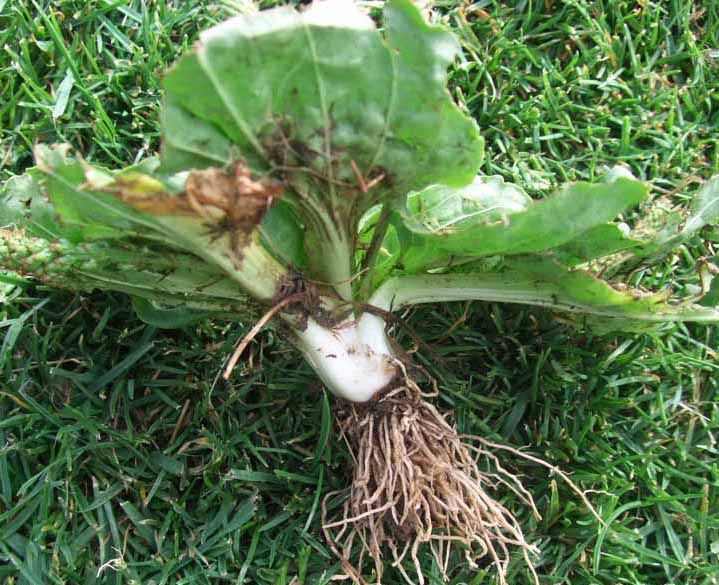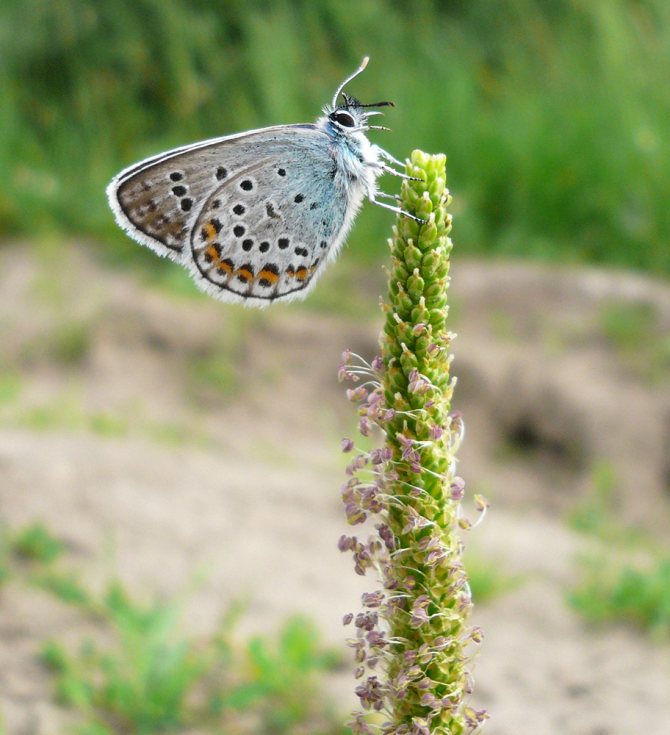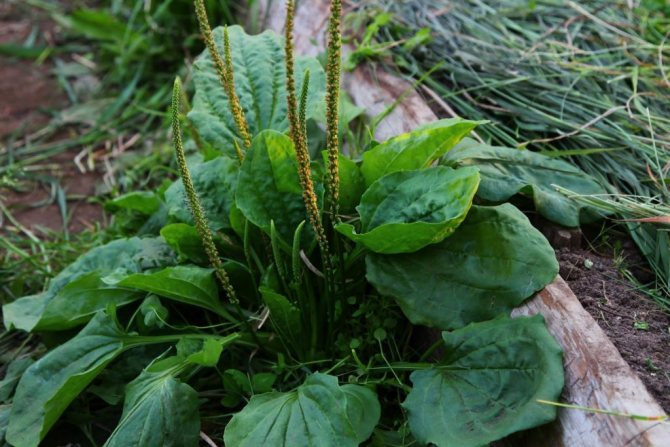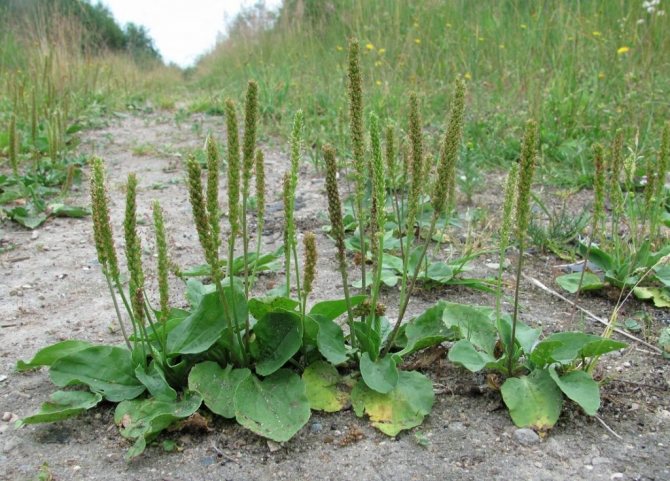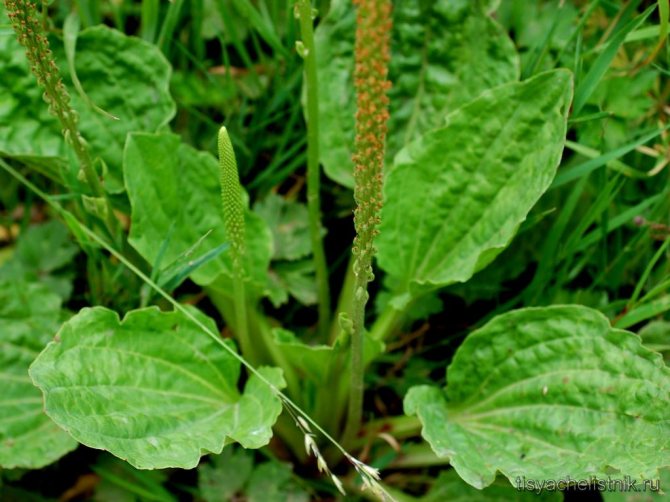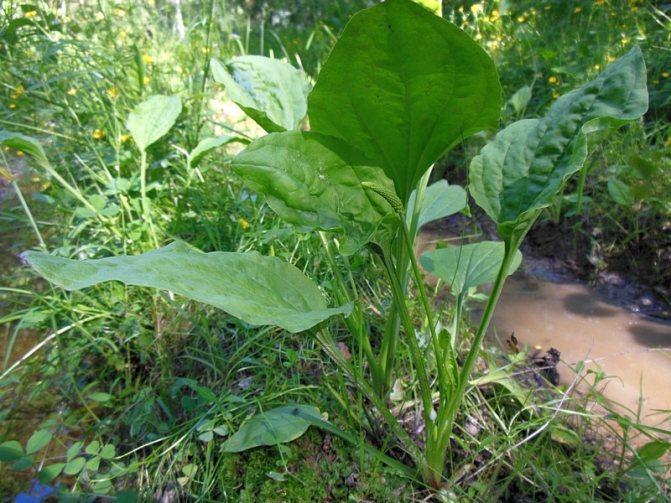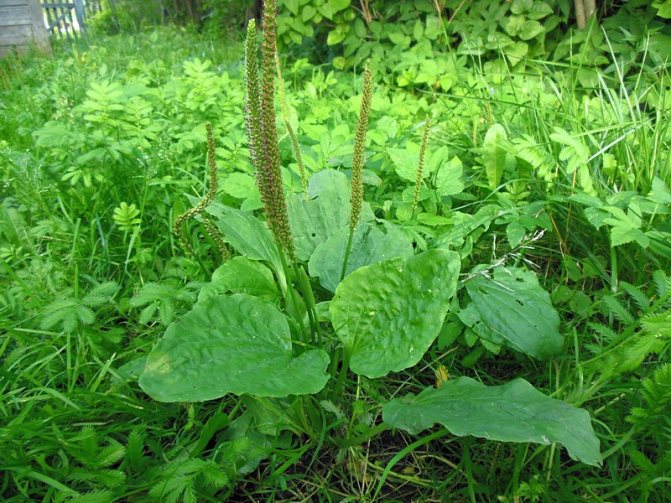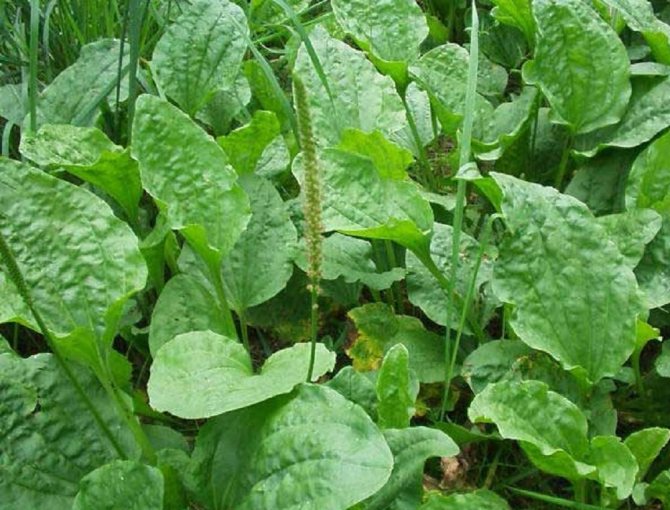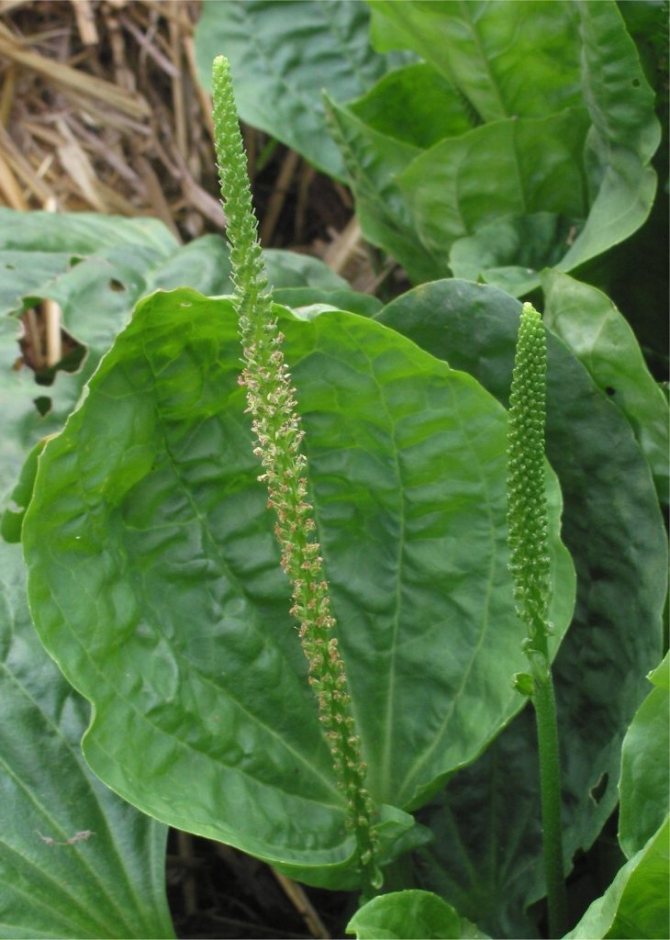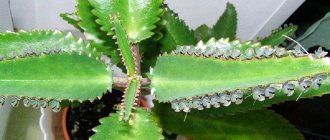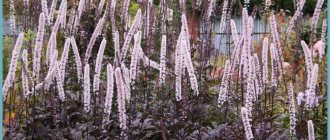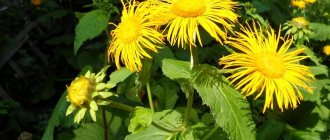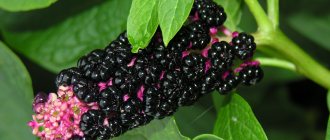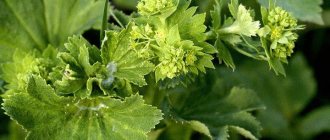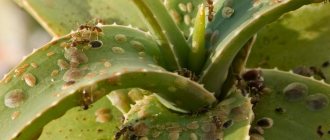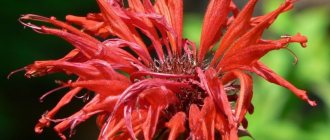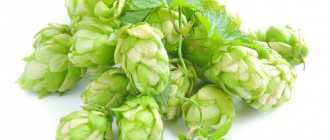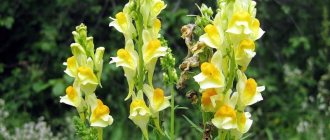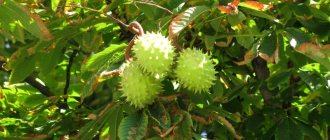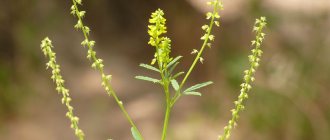Big plantain - a plant of the plantain family (Plantaginaceae Juss). Latin name: Plantago major L.
Other names: seven-seater, woodworm, companion, roadside, boil grass, rannik.
The plantain has about 250 species, but the lanceolate plantain (Plantago lanceolata L.), the flea plantain (Plantago squalida Salisb) and especially the large plantain, which are more than others used in official medicine, have the greatest medicinal properties.
Treatment recipes
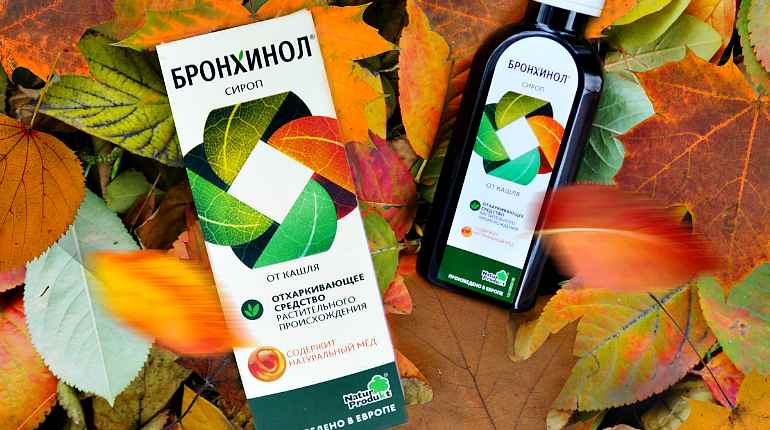
In the pharmacy network, you can buy medicines that include plantain raw materials.
- Syrup "Bronchinol" Price 159-202 rubles. for 100 milliliters. In addition to plantain extract with coltsfoot, the preparation contains eucalyptus and peppermint oil. Take 1-2 tbsp. l. when coughing 3-4 times a day for 2-3 weeks.
- Tablets for dissolution "Sage Forte and Plantain" The price of 20 pieces is on average 139-155 rubles. They have a bactericidal, anti-inflammatory, analgesic, expectorant, antiseptic effect. They are used for diseases of the oral cavity, respiratory organs, and throat. It is recommended to dissolve one tablet 4-5 times a day. The average course duration is 4-5 days. The need to repeat therapy is determined by the doctor. The drug is prohibited for lactation, phenylketonuria, pregnancy, predisposition to intestinal disorders.
- Plantain juice The price of a 100 ml bottle is 119-139 rubles. It has an enveloping, antiseptic, expectorant, anti-inflammatory, regenerating, antispasmodic effect. Improves appetite, regulates digestion, lowers cholesterol concentration. Recommended for bronchitis, colitis, anacid gastritis, dysbiosis, enterocolitis. Improves the condition of stomach ulcers, pneumonia, eliminates constipation. Externally used for wounds, furunculosis, abscesses, dermatitis, burns. With pathologies of the gastrointestinal tract, a tablespoon of the drug, diluted in 50 ml of purified water, is taken before meals (15-20 minutes) from three to four times a day. The course lasts 30 days. For cough, reception in similar doses is practiced after meals (observe a twenty-minute interval). For skin lesions, lotions or rinsing are done every six or eight hours. Bandages with plantain juice for burns are changed every hour and a half. In order to exclude harm to health, it is taken into account that a prohibition to take the drug internally is a tendency to thrombosis, increased gastric secretion, a stage of exacerbation of an ulcer against a background of excessive acidity, and personal intolerance.
Useful and medicinal properties
The plantain is one of the oldest medicinal plants. Its medicinal properties were used in China and in the regions neighboring with it 3 thousand years ago, the ancient Romans and Greeks also knew about it. The use of plantain for various diseases is very wide.
Plantain leaves: medicinal properties
An infusion of plantain leaves is used internally as an expectorant for colds, as well as for bronchitis, bronchial asthma, whooping cough, pneumonia, pulmonary tuberculosis, pleurisy.In addition, the infusion is effective as an antipyretic agent.
Preparations based on plantain, including juice, are used to treat diarrhea, anthrax, impotence, gonorrhea, lung cancer, enuresis, nephritis, and other diseases of the urinary tract, as part of the collection - for epilepsy in children, as an antihelminthic. They also have a calming effect and are used for high blood pressure. In addition, these drugs are used to treat stomach and duodenal ulcers (with normal or low acidity) and other diseases of the gastrointestinal tract.
Outwardly, the infusion (including fresh leaves and juice) is used as a hemostatic, anti-inflammatory, wound-healing and bactericidal agent for the treatment of bruises, wounds, cuts, chronic ulcers, phlegmon, boils, purulent wounds, as well as conjunctivitis. In addition, this remedy is used to treat weeping eczema and calluses.
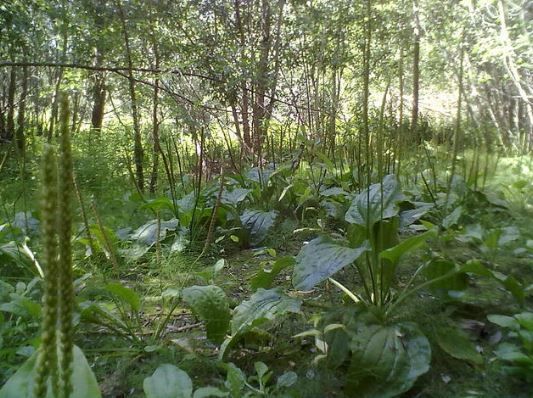

Plantain-based preparations (including juice) have found application in inflammatory diseases of the oral cavity and nasopharynx. Freshly crushed plantain leaves, mixed with chalk, are used to treat erysipelas.
Plantain juice: medicinal properties
Juice from fresh plantain leaves inside is used for tachycardia, gastritis (with low or normal acidity), colitis, enterocolitis, urethritis, polyuria, impotence, as well as acute respiratory diseases and headache. Plantain leaf juice is used externally to treat corneal wounds, toothache, nosebleeds, as well as neurodermatitis and acne. Attention should be paid to another valuable property of the juice: in a 1: 2 dilution it inhibits the growth of pathogenic staphylococcus, in a 1: 4 dilution - Pseudomonas aeruginosa, and in a 1: 2 dilution it inhibits the growth of hemolytic streptococcus.
Plantain seeds: medicinal properties
The plantain seed infusion is used internally for diabetes mellitus, male and female infertility, achilia, tumors of the gastrointestinal tract, collected for cystitis, as a diuretic for nephritis and as an expectorant. Psyllium seed powder is used as an anti-inflammatory agent for colitis, stomach and duodenal ulcers (with normal or low acidity). Outwardly, an infusion of plantain seeds treat eye diseases, in the form of lotions they are used for conjunctivitis.
Plantain root: medicinal properties
In comparison with other parts of the plant, the plantain root is used little. Root extract - for fever and snake bites, milk decoction - for kidney and respiratory diseases, fresh roots or alcohol tincture - for toothache, and powder - externally, as a wound healing agent.
Plantain with honey: medicinal properties
Plantain with honey is an incredibly useful remedy that is used primarily for various broncho-pulmonary diseases, including chronic ones, as well as respiratory diseases. For these purposes, plantain syrup is prepared with sugar, and best of all, of course, with honey. Here, the healing properties of honey are connected to the medicinal properties of plantain. You need to prepare this remedy in advance, before the season of colds and store in the refrigerator. In addition, the combination of plantain and honey is used to treat various diseases of the gastrointestinal tract, including gastritis, stomach and duodenal ulcers, enteritis, enterocolitis, flatulence, colic, it is also valuable for atherosclerosis, pulmonary actinomycosis. A faster way is to take an infusion of plantain large, to which, immediately before use, add 1 tsp. honey.
Procurement, collection, storage
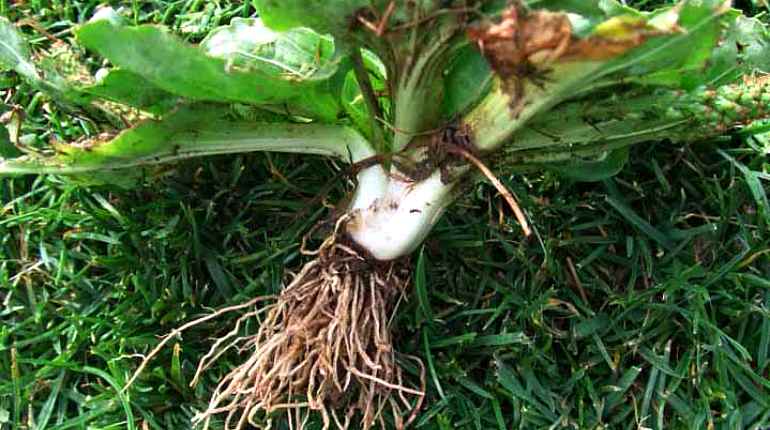

The plantain plant is completely dug in the second half of summer and early autumn. The above-ground part is cut off. The roots are rinsed several times in running water, broken, rotten and poor-quality processes are removed.
Cut the raw material into small pieces, pour it evenly in a thin layer onto thick white paper. Drying is carried out in a well-ventilated area, protecting the roots from the burning sun rays.
An article for you:
Omik root: medicinal properties and contraindications in folk medicine and cosmetology
Qualitatively dried product is transferred into small linen bags. They are hung in a dry closet or kept in a closet, providing ventilation, for up to two years.
Planting and caring for plantain
- Landing: sowing seeds into the ground - before winter or early spring, but only after stratification of seeds with cold for two months.
- Lighting: bright sunlight.
- The soil: any, except swampy and heavy.
- Watering: periodic, when the topsoil dries up.
- Top dressing: solution of Nitrofoska or other nitrogen fertilizer in early spring and after the first collection of leaves.
- Properties: popular medicinal plant.
Read more about growing plantain below.
Why Psyllium Root Helps Treat Diseases
The presence of phytosterols, linoleic acid, dextrose, starch in the composition determines the benefits of plantain roots. There are mucus, sucrose, tannins, cholesterol, allantoin. Medicinal properties:
- astringents;
- mucolytic;
- antiallergic;
- bactericidal;
- hemostatic;
- soothing;
- pain relievers;
- regenerating;
- anti-inflammatory.
Healing raw materials help to reduce the concentration of cholesterol, has a beneficial effect on the skin, maintaining its elasticity, slowing down age-related changes.
There is also the benefit of plantain roots in its ability to relieve inflammation, quickly heal abrasions, wounds, cuts. This raw material helps to eliminate stomach cramps, diarrhea.


Eliminates respiratory diseases, improves the secretory function of the stomach, relieves severe pain. Heals whooping cough, pulmonary tuberculosis, bronchitis, pleurisy, asthma, articular lesions.
It successfully eliminates inflammation of the bile ducts, herpes. It is used for pathologies of the adrenal glands, cardiac system, thyroid gland. Recommended for polyuria.
Helps eliminate puffiness, treats pharyngitis, sore throat, gum disease. Plantain root is useful for women, as it reduces blood loss caused by heavy menstruation. Valued by men, as it allows you to enhance potency, increase sperm activity.
Plantain in folk treatment is used in different forms. When making home remedies, discuss the recipes with your doctor. This will provide a favorable result in the treatment of specific pathologies.
Plantain recipes
For colds, severe coughs, it is recommended to take teas and decoctions:
- grind freshly picked leaves, mix with 0.2 liters of water, boil and add 3 tbsp. spoons of honey. Take the ready-made mixture in a teaspoon once an hour.
- dried leaves are used for tea: 1st method - pour boiling water over 2-3 teaspoons of dry leaves and leave for a quarter of an hour, drink 0.2 liters 3 times a day with honey instead of sugar; 2nd method - 4 tbsp. tablespoons of dry leaves pour 0.5 liters of boiling water, insist for 1.5 hours, strain, take 1 week 4 times a day according to Art. spoon.
A unique decoction of plantain leaves helps with diseases of the gastrointestinal tract, respiratory tract, and wound healing. When preparing a decoction in 0.2 liters of boiling water, add 2 tbsp. tablespoons of dry leaves, in a steam bath, bring to readiness (1/2 hour), cool, strain. Take before meals 0.1 l three times a day. For lotion or treatment of wounds, soak a cotton or gauze swab with broth.
Cough root treatment
Chopped dried roots - 1 tbsp. l. in an enamel bowl, pour a liter of boiled water.Cook at minimum heat for ten minutes. The removed container is left at room temperature for 24 hours.
After decanting through a two-layer gauze, the medicinal broth is consumed in a tablespoon before breakfast, lunch, dinner, observing an interval of 15 minutes.
Identical treatment relieves whooping cough, pulmonary tuberculosis, asthma, pleurisy. On its basis, he practices compresses to relieve swelling and pain from stings of bees, mosquitoes, wasps, hornets and even snakes.
Location
Flea and ovate plantains prefer bright sun and well-drained soil, large plantains prefer moist soil and light shade.
Reproduction
By sowing seeds in the spring in the soil heated by the sun.
Pests and diseases
In dry weather, the plantain is sometimes affected by powdery mildew.
Procurement and storage
The leaves are harvested and dried for medicinal purposes as needed. The mature seeds are harvested as soon as the morning dew has dried and then dried.
For joint pain
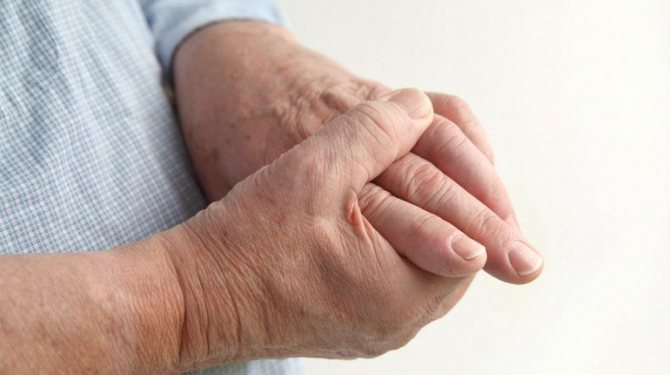

The pronounced analgesic, anti-inflammatory qualities of plantain rhizomes make it possible with their help to successfully alleviate the condition caused by articular lesions.
Washed fresh raw materials - 300 grams should be finely chopped with a sharp knife. Place the fragments in a bottle. Add 200 ml of medical alcohol and 130 ml of purified water. When closed, they are left in the dark for a week.
For the treatment of joints, it is recommended to use a prepared tincture, which can not be filtered, soak a soft linen napkin folded in four layers. Placed on a sore joint and incubate for 20 minutes. Practice sessions every evening.
Herbal medicine
Due to the high content of mucous substances, plantain preparations reduce irritation and inflammation of the mucous membrane of the respiratory tract, and also have an expectorant effect. They are also prescribed for the treatment of peptic ulcers, gastritis and colitis.
Rinse your mouth and throat with diluted plantain juice for sore throat, pharyngitis, stomatitis and gingivitis. Fresh leaves are applied to wounds and bee stings; ointment is applied to wounds, cuts, burns and hemorrhoids.
- Flea plantain and ovate
The seeds of these plants are a powerful laxative. The soluble fiber they contain absorbs water, stimulating and facilitating the work of the large intestine.
Clinical trials have confirmed the effectiveness of these plantain seeds in the treatment of chronic constipation and intestinal inflammation. They are also prescribed to soften stools and facilitate bowel movements with cracks in the anus, hemorrhoids and recovery of patients after surgery on the rectum.
Due to its soluble fiber content, flea plantain and egg plantain seeds can be used to combat high cholesterol levels. Cholesterol is bound by these fibers in the intestines and together with them is excreted from the body.
Talk to your doctor before taking psyllium medications. If pregnant or breastfeeding, these herbal preparations should only be taken under medical supervision.
Big plantain - a plant of the plantain family (Plantaginaceae Juss). Latin name: Plantago major L.
Toothache relief
Given the pronounced analgesic characteristics of plantain root, it is often used to relieve severe toothache.
You will need a fresh root, which must be washed in clean water, dried with a cloth and removed the top skin. Then a piece is cut off and inserted into the ear on the same side as the aching tooth.
An article for you:
Medicinal properties of elecampane root and its use in traditional medicine
You can chew on the fresh root. It helps to eliminate pain by putting dried raw materials slightly crushed into powder into the carious cavity.
Contraindications for use
This plant cannot be used internally to treat any diseases: if you have increased acidity, increased production of gastric juice, as well as for some types of stomach ulcers. Before using products containing plantain root, you should consult a specialist. Long-term use of formulations containing this plant can increase blood clotting, increase the risk of blood clots.
You should not use infusions and other recipes in which the herb is present, for those people who have an allergic reaction, intolerance to the plantain root and its other parts. Therefore, asthmatics and patients with allergies should be very careful to use such drugs. You can first try to take a small amount of the drug so that the body becomes accustomed to the effect of the new drug, and there are no severe allergic complications.
For heartburn
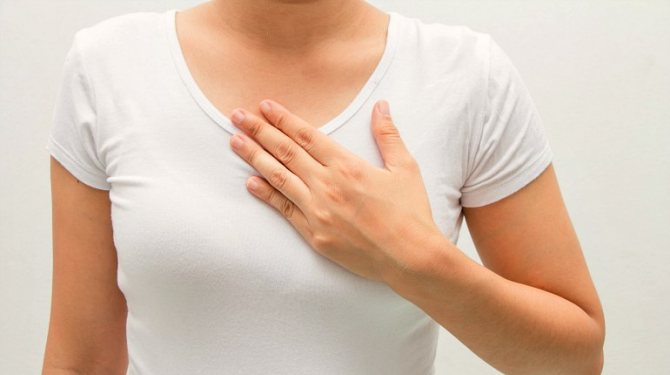

In order to get rid of heartburn, foliage or plantain seeds are usually used in folk recipes. It is necessary to rinse fresh leaf plates, wipe with a napkin and grind with a meat grinder. Gain 1.5 liters of gruel. With vigorous stirring, combine with 1.5 kg of granulated sugar.
Keep the mixture in a glass container under the lid in the refrigerator. Take half an hour before breakfast, lunch, dinner in a tablespoon. The course is maintained until the prepared product runs out.
You can use the infusion. Take one large washed plantain leaf. Steamed with a glass of boiling water. After cooling down, they drink the healing liquid throughout the day for two sips.
Plantain seeds effectively eliminate heartburn, which additionally eliminate inflammation and activate tissue regeneration. Place 25 g of dried seeds in a glass jar. Steam 200 ml of boiling water. Close tightly and shake the contents for 20 minutes.
Filter through cheesecloth after complete cooling. A tablespoon is consumed before meals every eight hours. After a ten-day course, you should pause for two weeks and repeat the treatment.
Growing plantain
Planting plantain
Large plantain grows well in any soil, except for swampy or heavy, but in one area this plant is grown for no more than 2-3 years. Before sowing, the soil is dug up with the introduction of 4-6 kg of compost or humus, 30 g of superphosphate and 15 g of potassium fertilizer for each m² of the plot, then the surface is leveled and compacted. Plantain seeds are best sown before winter in furrows 5 mm deep, located at a distance of 45-60 cm from each other. Podzimnaya planting is good because in cold soil the seeds undergo natural stratification and germinate together in spring.
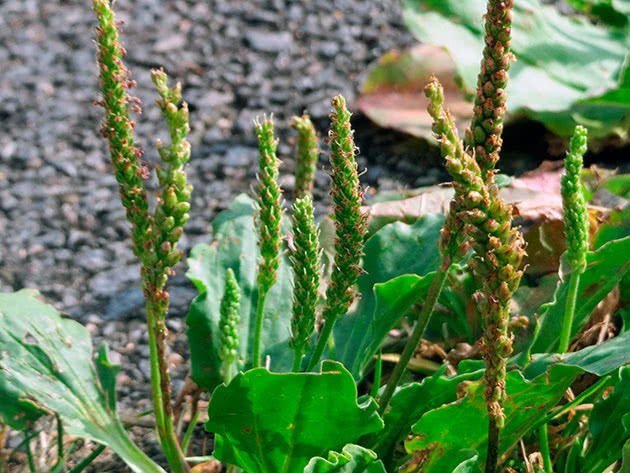

If you decide to sow plantain in the spring, then within two winter months they are artificially stratified in a vegetable box of the refrigerator, after placing them in a jar or plastic bag with wet sand (1: 4) and holding them for two days before laying for stratification at a temperature of 18-20 ºC. From time to time, the jar is taken out of the refrigerator and shaken, and the sand, if necessary, is moistened. Spring sowing is carried out as soon as the soil thaws. The plot is preliminarily loosened to a depth of 3-4 cm and rolled, the seeds are sown to a depth of 10 mm.
- Physalis: planting and care in the open field
Plantain care
Plantain beds need to be weeded, watered and loosened. Especially the plantain of the first year of life needs weeding, since it is easier to drown out the weeds. The first weeding and loosening is carried out as soon as shoots appear.It is not necessary to thin out the plantain, even if it sprouted too thickly.
The first feeding is carried out in early spring, and the second after the first collection of leaves. As a fertilizer, you can use Nitrofoska in a dosage corresponding to the instructions, or apply 15-20 g of any nitrogen fertilizer to each m² of the garden bed.
For dissolving kidney stones
A decoction is prepared from several varieties of dried crushed plant materials. You will need plantain foliage with bearberry. Additionally, knotweed grass and birch buds are taken. Maintain a ratio of 3: 3: 5: 5.
Measure 2 tbsp. l. collection. Pour into a saucepan, pour in a liter of cool water and leave for 12 hours. Then, after boiling, they are heated for 10 minutes at a low temperature. The cooled filtered broth of 100 ml is drunk after meals (observing the hourly interval) four times a day.
Collecting plantain
It is best to collect raw materials after rain, allowing the leaves of the plant to dry out. The crop of the plantain of the first year is harvested once, and for the two-three-year-old - twice per season: the first time - at the very beginning of flowering, the second - a month and a half or two before the onset of autumn, so that the plantain has time to get stronger and grow a rosette of leaves by the end of the growing season. Plantain leaves are collected, the length of which is 10-12 cm. To obtain dry raw materials, the leaves are dried under a canopy or in a room with good ventilation at 40-50 ºC. You can dry the leaves hanging in bunches.
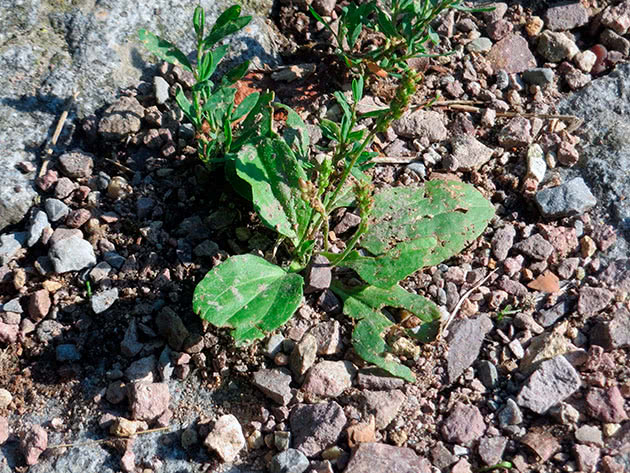

When collecting medicinal raw materials, it is very important not to damage the outlet and the rhizome of the plant. The finished raw material is green or brownish-green leaves with a faint odor and bitter taste.
When the lower part of the inflorescence is ripe, plantain seeds are harvested, which, like the leaves, are medicinal raw materials. The inflorescences are cut off at the base and dried for 3-5 days, after which they are threshed.
Hemorrhoid treatment
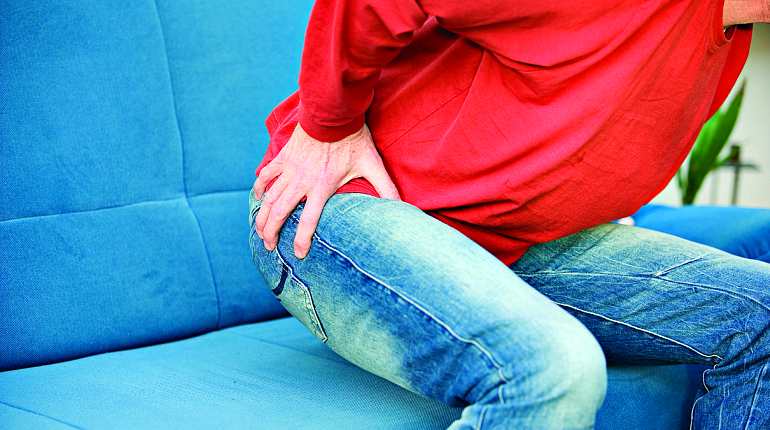

Spread in a saucepan 300 g of the dried mixture of plantain roots and leaves, taken in equal volumes. 1/2 liter of boiled water is steamed and kept in a steam bath for a quarter of an hour. Then leave under a tight lid for 45 minutes. Strain the liquid fraction through a sieve. Pour into a small bowl, add 1: 1 warm water. Immerse the affected area for 15 minutes.
The broth is also used for evening microclysters, introducing 75 ml of a slightly warmed product. Lotions effectively relieve inflammation. A cotton pad soaked in healing liquid is kept on the problem area for 10 minutes. They practice the procedures in the morning and in the evening.
Plantain description
The second name of the plantain is "seven-veined companion" because of its vertical veins on the leaves and the peculiarity of leaving seeds on human clothing and animal hair.
Plantain occurs in the form of solitary plants, occasionally in the form of dwarf shrubs. There are annual or perennial plantain species. In total, there are about 150 species of this herb. Some of them are classified as weeds.
Habitat - subtropical and temperate climatic zones. Occurs along roads, in steppes, sandstones and meadows.
Fresh plantain root for herpes treatment
Fresh roots and leaf plates from three plantain plants are washed with clean water, wiped with a paper towel and chopped. Transferred to a glass vessel, where add dry red wine - 150 ml and the same volume of purified water.
An article for you:
Marsh cinquefoil root: medicinal properties and contraindications
Leave for a day and then filter. The cooked extract should be taken a quarter of an hour before breakfast, lunch, dinner, 50 milliliters each.
Application methods
Plantain root can be used fresh and dry for treatment. Compresses, decoctions, infusions and powder are made from it.
Infusion for elephantiasis
With pathological growth of the skin and subcutaneous tissue, accompanied by congestion and edema in the lower extremities, the following recipe helps.A mixture of the aerial part and plantain root (330 g) is poured with a liter of boiling water, boiled for one minute, infused for an hour and filtered. The resulting infusion is taken in 100 ml 6 times a day.
Herpes remedy
The roots from three plants are crushed, ground into a homogeneous mass, 300 ml of a mixture of dry red wine and pure spring water, prepared in a 1 to 1 ratio, are poured in. Use this remedy, 50 ml 3 times a day until complete recovery.
Tea for colds and flu
A mixture of dry or fresh leaves, roots and plantain seeds is poured with 200 ml of boiling water, insisted for 10 minutes. Add sugar or honey if desired. Drink during the day.
Decoction for diseases of the endocrine glands
1 cup boiling water is added to the finely chopped roots of the plant (1 tbsp. L.). The resulting mixture is kept in a boiling water bath for 5-10 minutes, allowed to cool to room temperature, filtered and taken in 15 ml three times a day.
Aqueous extract of roots for tuberculosis
Finely chopped roots (1 tbsp. L.) Pour 1 liter of boiling water, heat on a minimum heat for 10 minutes, insist for a day, then filter. Take 15 ml three times a day 15 minutes before meals.
Slimming application
The effectiveness of the use of plantain in order to get rid of excess weight is explained by the ability of this plant to activate metabolic processes, remove slag deposits, and dull the feeling of hunger.
It is considered the most effective method of losing weight using a collection of several beneficial plants. For this purpose, plantain and dandelion roots are combined with buckthorn and fennel fruits with the addition of parsley herb.
Shift 1 tbsp. l. each pre-dried and ground variety of raw materials in a bowl with a liter of boiled water. After half an hour, the infused liquid is filtered. Drink 250 ml before meals four times a day.
Features
Large plantain is a herbaceous perennial. Height 15-50 cm.
The root is short, thick with many small filamentous processes.
The leaves of the plant are wide, ovoid or elliptical in shape with 3-9 arcuate veins, collected in a basal rosette, pressed to the ground.
The inflorescence of small inconspicuous flowers is located at the top of a naked long stem in the form of a spike.
The plantain fruit is an ovoid capsule with 8-16 small seeds.
The plant blooms from late May to September, the fruits ripen in August-September. Plantain propagates by seeds.
Benefits for hair


Plantain has a beneficial effect on hair that has lost its healthy appearance. This plant helps to strengthen the strands, restore their elasticity, eliminate split ends and dandruff.
The most common option is to use plantain tea as a mouthwash. Use the whole plant with foliage, roots, seeds. After thorough washing, the raw materials are chopped, 20 grams are measured and combined in a ladle with a liter of water.
The mixture must be boiled, and then additionally insisted until warm. The broth strained through double gauze is used as the final rinse of the washed hair. You do not need to rinse off the product additionally. It is advisable to conduct sessions at least twice a week.
Chemical composition
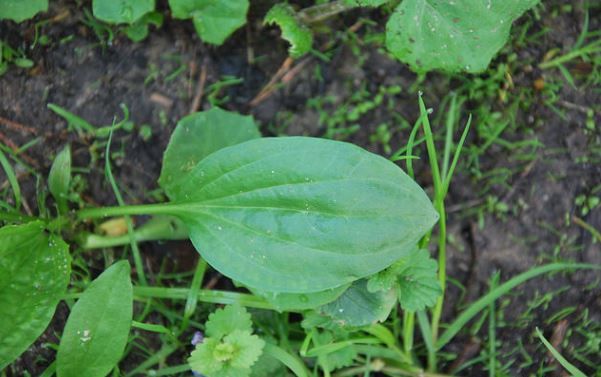

Big plantain has the richest and unique chemical composition. The leaves of the plant contain vitamin K and a considerable amount of vitamin C (289 mg%), citric and oleic acids, and besides this, a large percentage of nitrogenous and nitrogen-free extractives, fiber, fats, glycoside aucubin, flavonoids, carbohydrate attracts, tannins, bitterness. Particular attention should be paid to the fact that in the composition of the leaves of the plantain there is a whole list of macro- and microelements, among which the first place is occupied by potassium (44.6 mg / g) and calcium (39.3 mg / g), as well as iron, manganese , copper, zinc, cobalt, molybdenum, chromium, barium, vanadium, selenium, nickel, strontium, lead and boron. Plantain seeds contain a large percentage (up to 44%) of mucus, fatty oil (20%), protein (22%) and amino acids (16%), they also contain plantaeosis and steroid saponins.
Contraindications
Carrying out after a medical consultation treatment with plantain roots, it is necessary to take into account that there are specific contraindications to this plant material: stomach ulcer;
- predisposition to thrombophlebitis;
- gastritis against the background of excessive acidity;
- increased blood clotting;
- personal intolerance.
Any medicinal manipulations based on the use of remedies from the plantain root must be agreed with the doctor. This will prevent harm to health, exclude negative side reactions.
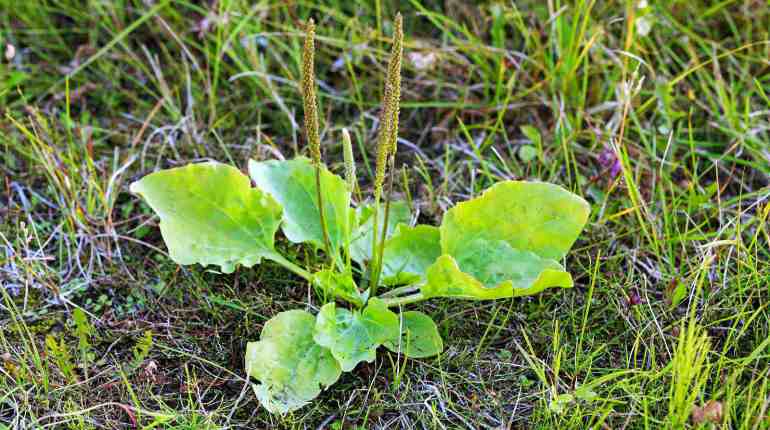

Subject to the recommendations set out in the prescription description, excluding the excess of the dosages established by the doctor, it is possible to guarantee a predictable therapeutic result.
Botanical description of the plant
Plantain is a perennial herb that can be found in the temperate climate zone almost everywhere: on vacant lots, along roads, near residential buildings, in gardens and vegetable gardens, in parks, rural areas, along the banks of water bodies. The widespread ubiquity of this herb is due to its undemanding growing conditions and easy reproduction by seeds, which can adhere to the soles of shoes, animal paws, bird feathers and be carried in this way to various places.
Plants of this genus have a short, thick vertical rhizome of brown color, from which numerous thin cord-like roots of a yellowish color extend in the form of a dense bundle. It is they who provide reliable retention of the plant in the ground.
Interesting: Native Americans often carried psyllium root powder with them to protect against snakes and snakebites. Due to its ability to draw snake venom from a wound, the plant is also called "snake grass".
The leaves are large, with arcuate venation, are located on the petioles and form a basal rosette. The plant blooms from May to September. The flowering arrows are leafless, erect, coming out of the center of the root rosette of leaves. The flowers are inconspicuous, very small, sessile, form a dense spike-shaped inflorescence at the top of the peduncle. Fruits appear in August, are polyspermous capsules. Plantain is pollinated by the wind, propagated by seeds.
Plantain properties: harm and benefit
The medicinal properties of plantain
The fact that plantain has medicinal properties became known to man for a long time. So, it is very widely used in alternative medicine during the treatment of pleurisy, acute respiratory diseases, bronchial asthma, catarrh of the upper respiratory tract, as well as tuberculosis. Preparations made on the basis of plantain help relieve inflammation, improve gastric secretion and cleanse the blood. Also, this medicinal plant is very effective for gastritis, peptic ulcer, whooping cough, enteritis, enterocolitis, malaria, hemorrhoids, skin diseases, as well as inflammatory processes in the bladder.
Fresh juice obtained from plantain herb helps accelerate regeneration processes in damaged tissues, as well as disinfect wounds and remove pus. It is also known that this herb has a sedative effect, therefore it is used for neuroses, insomnia and increased irritability. Preparations made on the basis of this plant help to normalize blood pressure, as well as relieve edema.
The medicinal properties of this plant are also widely used for gynecological diseases. So, plantain is used to eliminate inflammation of the mucous membrane and muscle membrane of the uterus, and they also stop uterine bleeding and eliminate ovarian dysfunction. Also, this plant is used to normalize potency in men. Plantain also shows very high efficiency in the treatment of nephritis, enuresis and diarrhea.
Plantain is also widely used externally. So, if there are cracks or cuts on the heels, then this plant will contribute to their rather rapid healing. For this, it is recommended to use an infusion made from plantain, it should be mixed with water, which is used for foot baths. If there are abrasions and calluses, then it is recommended to attach fresh leaves of this plant to problem areas at night. The next morning, the damaged skin should be restored.
Plantain is also used for hand skin care. From it at home, you can prepare a fairly effective cream with healing properties. To do this, you need to combine cow oil or honey with plantain infusion. Fresh juice obtained from this plant is perfect for dry skin. Before applying the juice to the skin, it is recommended to dilute it with clean water. From the resulting solution, you can prepare a face mask; for this, the required amount of starch should be added to the mixture of juice and water. The resulting mass must be applied to the skin of the face and kept for a third to half an hour. After that, the face is thoroughly washed with cool running water.
The leaf plates of this plant contain flavonoids, provitamin A, ascorbic acid, vitamin K, enzymes, polysaccharides, uronic acids, tannins, bitterness. And plantain seeds contain fatty oils, mucus, carbohydrates, amino acids and oleanolic acid.
Who is contraindicated plantain
Despite the fact that plantain is, of course, a useful plant with medicinal properties, it, like all medicinal plants, has a number of contraindications. So, drugs made on the basis of plantain are strictly forbidden to be taken by people whose secretion and acidity of gastric juice is increased. If a person has increased blood clotting, then such drugs can also harm him. They also cannot be used by those who have an individual plantain intolerance. Experts advise that before using plantain for the first time in the treatment of any ailment, be sure to consult with a qualified specialist.
Big plantain - a plant of the plantain family (Plantaginaceae Juss). Latin name: Plantago major L.
Diseases and pests of the "roadside"
Melilot grass: description, properties and application
Plantain is a unique plant that nature gave to man. It is noteworthy that the grass is extremely resistant to diseases and pests.
But sometimes his leaves turn yellow. As a rule, this is due to sunburn, which occurs after watering in hot and clear weather. Therefore, with the purposeful cultivation of a medicinal plant, it is necessary to correctly organize irrigation.
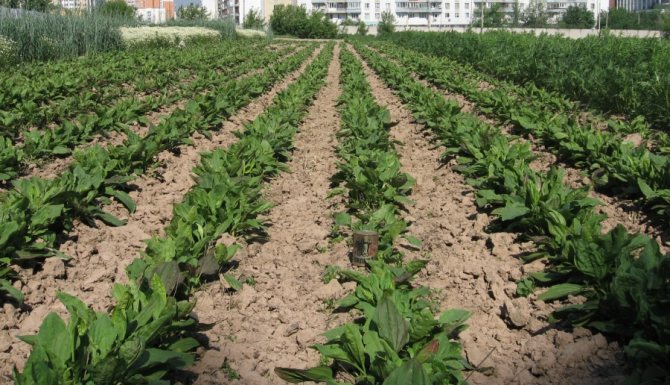

Growing plantain
Application of medium plantain
It is widely used in herbal medicine. A medicinal product is made from a plant. For its preparation, both leaves and seeds are used. Harvesting of medicinal raw materials - during flowering. To dry the grass, it is necessary that the room is well ventilated. The drying process ends when the petioles begin to break. Fresh leaves are good for juicing. Collection and preparation of seeds - in the fall. Glass containers are used for storage. The shelf life is up to 3 years.
When fresh, it is used to heal wounds. Plantain leaves are applied to burnt places, abscesses, cuts, and boils.
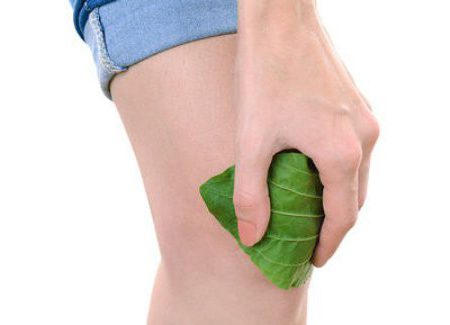

The juice has found application in dermatology in the treatment of acne and skin rashes.
A mixture of rubbed dry leaves is an excellent remedy for bleeding wounds. Ointments are indispensable in the treatment of purulent skin diseases.
Reception of infusions, decoctions of herbs is an effective way for blood purification. Used to treat ailments such as:
- grief (scurvy);
- atherosclerosis;
- temperature increase;
- nettle rash.
Effectively affects the activity of the genitourinary system, stomach and intestines. A decoction of the herb is treated:
- flatulence and gastritis;
- diarrhea and kidney disease;
- cystitis (inflammation of the bladder).
Stomatitis and gum inflammation are not complete without rinsing the mouth with tincture and juice.
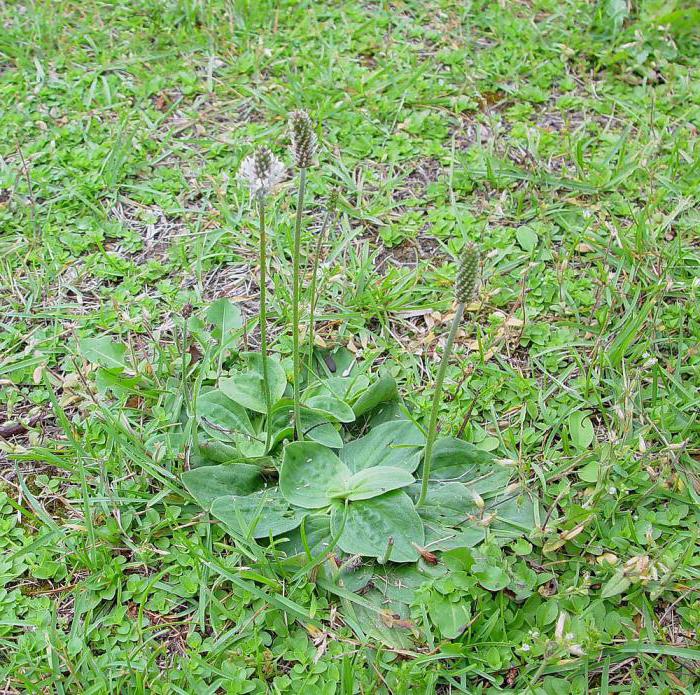

The broth is necessary to liquefy and exit the sputum from the body with infections of the respiratory system: nasopharynx, trachea, bronchi. It is considered a first-class expectorant drug for bronchitis, pulmonary tuberculosis.
Reception of an aqueous tincture of grass leaves inside tones, alcohol - reduces pressure, has a sedative effect on the central nervous system.
The seed decoction has a softening and enveloping effect. An effective remedy for hemorrhoids and constipation.
Plantain propagation
For gardeners, plantain is called a weed, but pharmacological companies grow it on an industrial scale. At the same time, it grows in ordinary glades, because it is not cultivated in greenhouses or in special fields. The culture is unpretentious, therefore it does not need special care. It grows on almost any soil, it does not require any fertilizers and constant moisture.
Seed propagation
Motherwort herb: description, properties and application
The plant reproduces not only by means of seeds, which are able to maintain their germination for more than ten years, but also by means of root processes. If there is a desire to sow plantain with seeds, they just need to be collected after ripening and scattered in the designated place, having previously moistened this piece of land.
After a while, sprouts will appear from the seeds, which will take all the necessary minerals and trace elements from the soil. One or more rods can grow from one seed.
Important! A wild plantain is capable of scattering several hundred seeds from one stem over a distance of 20 km. For a full season, each plant throws out at least three stems. Due to its excellent germination and a large amount of seed, plantain was ranked as a weed.
Propagation by root shoots
To propagate the plant in this way will have to make a little more effort. To do this, take 5 cm pieces of root and put them on the bottom of a small hole made on a loose area of soil. Then the pits are sprinkled with earth and watered a little.
You can guess that you won't have to wait long for the first shoots. They will appear in a couple of weeks. True, the first few days they will be very weak and easily damaged.
Note! This breeding method is only suitable for spring. And the segments should be taken only from the strongest "fellow travelers".
Active ingredients
The leaves contain carbohydrates (polysaccharides - up to 20%, mucus, mannitol, sorbitol), alicyclic compounds, iridoids (iridoid glycoside aucubin, catalpol), nitrogen-containing compounds (allantoin), vitamin K, phenols and their derivatives, phenolcarboxylic acids, flavonoids (baicaleinoids luteolin, scutellarin), derivatives of caffeic acid (chlorogenic acid). In addition, plantain leaves are rich in potassium and calcium. Organic acids, mucus (19.5%), iridoids, sterols, saponins, alkaloids, tannins, flavonoids, and fatty oil (9.4%) were isolated from the seeds.
Medicinal raw materials
For medicinal purposes, mature seeds, leaves and juice from them are used. Leaves are harvested during flowering, before they begin to turn yellow or partially redden. Raw materials are dried in attics or under awnings, spreading it in a thin layer of 3-5 cm, stirring regularly. Seeds are harvested by cutting off peduncles with mature seeds, laid out on paper, dried, and then threshed by rubbing between palms or rolling with a rolling pin. After that, it is sieved through a sieve of the appropriate diameter.
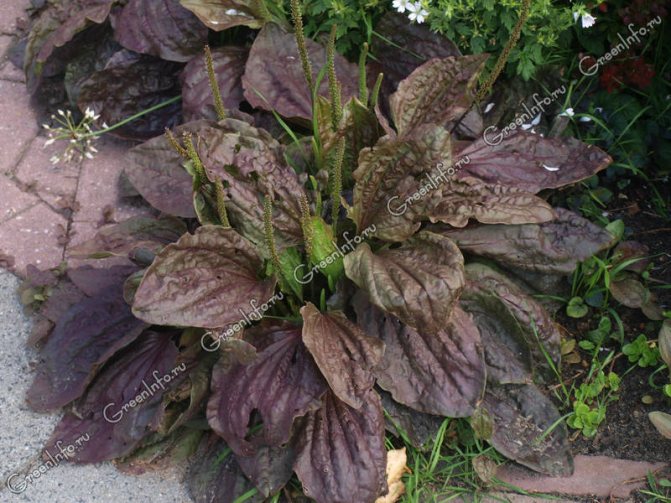

Large plantain Atropurpurea
Description
The plantain root is short and thick, densely covered with small suction roots. The leaves are bright green, rounded, oval or elongated, covered with veins on the underside. They grow in a root rosette. Resistant to trampling.
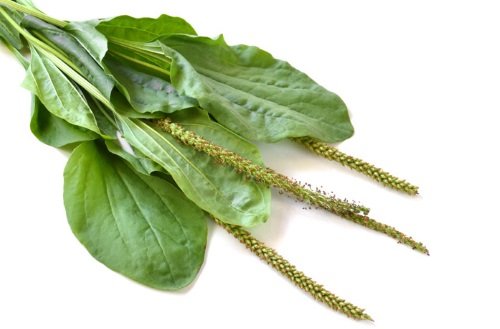

Appearance
Plantain flowers are small, grayish-white, densely located on a high (up to 70 cm) peduncle, in the form of a cylindrical spike. Flowering occurs throughout the summer season, the seeds ripen in September. Each plant can ripen over 50 thousand seeds, enclosed in egg-shaped boxes of 10 - 14 pieces.
The plant propagates by seeds, which with sharp tongs cling to the clothes and shoes of passing people or to the hair of animals. Thus, the plantain seed is spread over long distances.
Plantain species growing in our country:
- Large (ordinary). The well-known plantain growing along roads and paths, in fields and forest edges. The peduncles of the plant can reach a height of 70 - 80 cm. The leaves are large, ovoid, smooth, with pronounced hard veins. Fresh plantain leaves are applied to wounds, abscesses, ulcers, bruises. Psyllium tincture with alcohol helps to lower blood pressure.
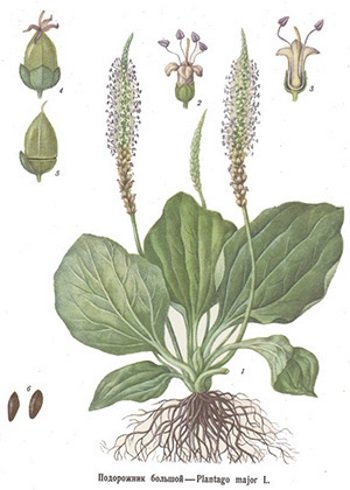

Large - Lanceolate. The plant has elongated and narrow leaves, densely growing in a basal rosette. In folk medicine, infusions and decoctions of lanceolate plantain foliage are used to treat a lingering cough. Lanceolate
- Middle. A less common variety of plantain. It can be found in the Caucasus, but unlike the species described above, the average plantain does not grow near human habitation. Herbal raw materials of this plant variety are used for the preparation of laxative medicines.
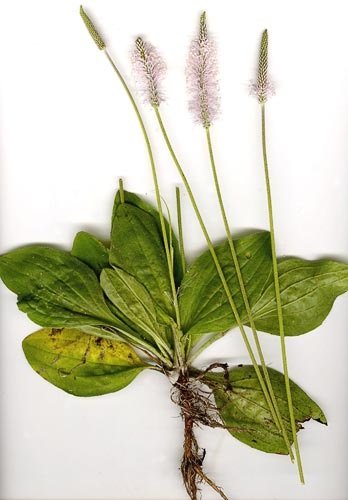

Middle
The article presents photos of a plantain for acquaintance with the plant.
Types and varieties of plantain with photos and names
Of the large number of plantain species in culture, only 2 are grown, which provide medicinal raw materials. A detailed description of them will be given below.
Sandy plantain (lat.Plantago arenaria), or rough, or Indian, or flea, or flea
This plantain species is represented by an annual herb. Branched shoots can reach about 0.4 meters in height. In the upper part, the shoots are glandular-pubescent. Opposite leaf plates in this type are linear and seamless, in length they reach about 70 millimeters. In the upper part, the leaves are serrated. The capitate inflorescences, which are ovoid, consist of small flowers. On the surface of the inflorescences there is also a dense pubescence, consisting of glandular hairs. The fruit of this plant is an ellipsoidal box with seeds inside. Both the herb and the seeds of this type of plantain have medicinal properties that are used in alternative medicine.
Large plantain (lat.Plantago major), or larger plantain
This species is a perennial herbaceous plant. Threadlike roots extend from a short rhizome. Basal leaf rosette consists of leaf plates with a wide oval shape and relatively long petioles. The height of the erect peduncle is from 0.15 to 0.45 meters, it bears the final spike-shaped inflorescence, which has a cylindrical shape and consists of small flowers. The fruit of this species is a polyspermous capsule. Fresh grass, as well as its leaf plates, have healing properties in this type of plantain.
Features of a medicinal plant
What is the healing power of plantain? How to collect it correctly and what types of this medicinal plant can be harvested? Is it possible harm to health in the treatment of this popular "favorite" and "doctor"?
Area
The plantain plant is a "cosmopolitan" plant, it can be found in many parts of the world - in Europe, Asia, North Africa and America, India. You will not see it unless only in the Far North and in the desert. Feels good in temperate, subtropical latitudes. It is unpretentious, gets along well with various types of plants, trampled, dense soil does not interfere with its growth, therefore it can often be seen near roads. But he also loves wet places, the coastal part of reservoirs, wastelands and slopes, often found near dwellings, in summer cottages, in thickets of bushes. Because of the longitudinal veins on the leaf, this herb is called the “seven-veined companion”. The inflorescences easily stick to the clothes of passers-by, wheels of vehicles, animal hair, and thus the plant turns into a "companion". But there are no accidents in nature. In this way, plantain seeds are spread.
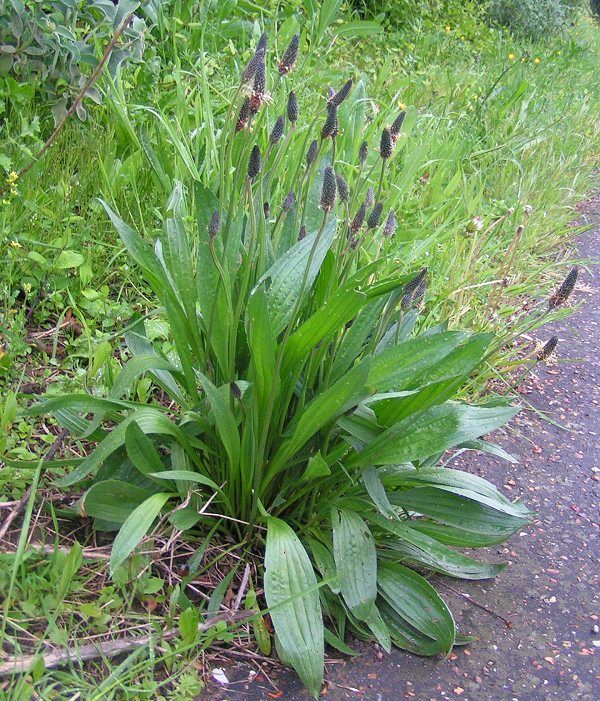

Plantain lanceolate, or lanceolate.
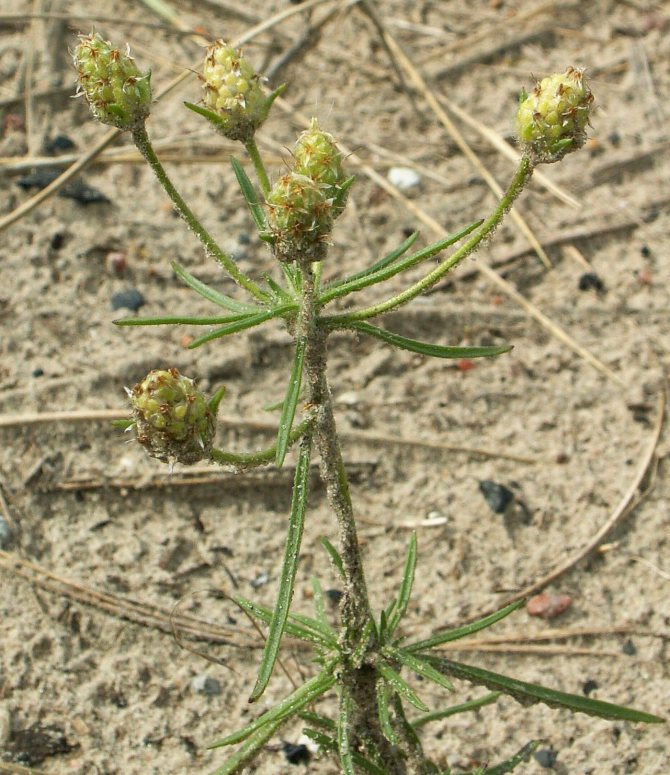

Plantain
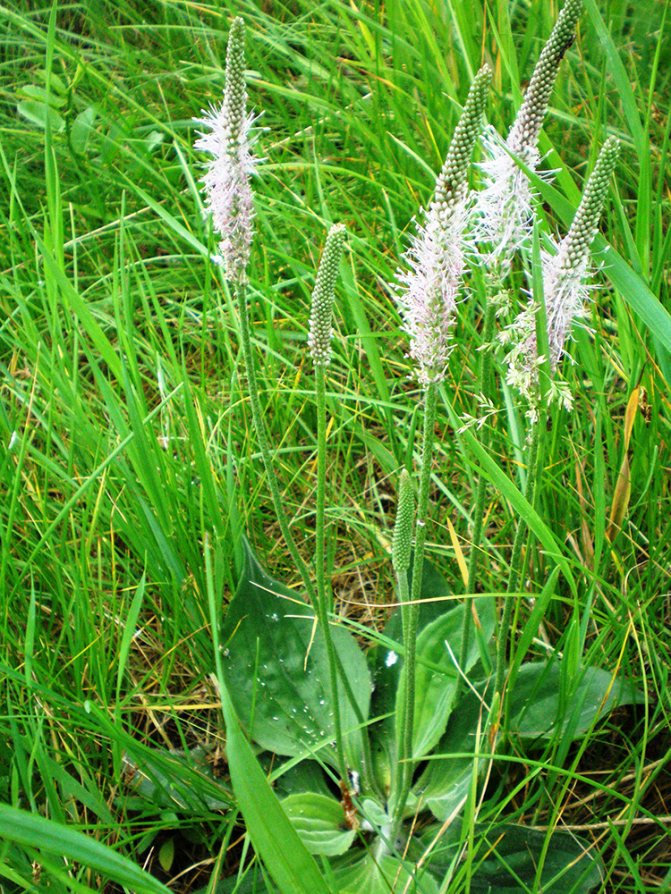

Medium plantain.
Plantain species
In nature, there are about 250 species of this plant. Most plantains are perennial weeds. Many of them rightfully occupy an honorable place in pharmacology. The most common "doctor" is the big plantain. What other species can be harvested as medicinal raw materials?
- Lanceolate, or lanceolate. Its peculiarity is lanceolate sharp leaves with long petioles and pubescent veins. The seeds are grooved, depressed from the inside, and the ear of the inflorescence is denser in comparison with other species. Unlike other varieties, it can take root on dry slopes, it tolerates heat well. It is valued in folk medicine and pharmacology as well as the big plantain.
- Bloody. It is also called flea, sandy, Indian, rough. What is the botanical description of the plantain plantain? Unlike other varieties, it is an annual with a branched, glandular pubescent stem (up to 40 cm), long pedicels on which small flowers in the form of ovoid heads grow. The most commonly used medicine is seeds, which have a lot of mucus, but the stems and leaves are also used to extract juice.
- Middle. He has jagged leaves pressed to the ground, short petioles, flower arrows can grow up to 50 cm; the seeds are flat on one side only.
In some countries, plantain large, lanceolate and flea is grown for the pharmaceutical industry. Plantain, depending on the species and climatic zone, begins to bloom in June and ends in September.
Botanical characteristic
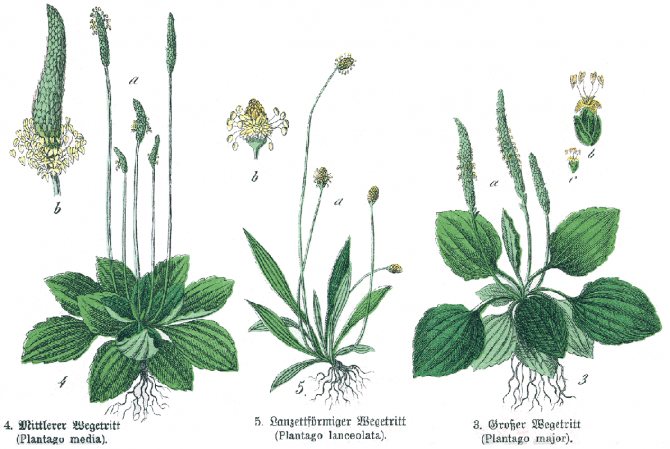

Plantain. Botanical illustration from the book by G. H. Schubert "Naturgeschichte des Pflanzenreichs".
What does a big plantain look like? Every child is familiar with this plant. There is no need to make a detailed botanical description. And yet, if we resort to botanical terms, then the "portrait" will be the following:
- root: short, filiform and thin, with a developed, branched rhizome;
- leaves: collected in a basal rosette, wide, oval, smooth, with long petioles;
- flowers: located in the axils of the bracts, small, brown in color, the inflorescence is in the form of a long spike, and the straight flower stem (arrow) can be 15 to 30 cm high;
- fruits: in the form of a polyspermous box, which opens across.
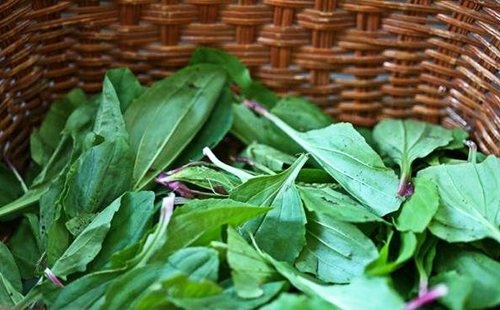

Blank
Plantain herb is prized by leaves, inflorescences, seeds and roots. The collection of this raw material is carried out at different times. Leaves are most often harvested.
- Collection. Leaves can be harvested from May to August, until they begin to turn yellow. Re-harvesting after haymaking is possible, it is carried out in August and September. The leaves are cut or the grass is mowed, and then the raw material is selected from it. Harvesting plantain is recommended only in dry weather. This is due to the fact that the seeds are abundantly covered with mucus from moisture and quickly deteriorate from this. It is also important to pluck the medicinal plant in an ecologically clean place.If a plantain root is required, it is carefully dug in and pulled out along with the stem and leaves, washed thoroughly and dried. Better to harvest in the fall.
- Drying. Dried naturally. Sheds, attics, closed spaces with good ventilation are suitable for this purpose. It is recommended to lay out the leaves in a thin layer and stir them so that they do not rot. How to determine the readiness of raw materials? If the petioles crack, then you can pack and put away for storage.
- Storage. Raw materials are laid out in linen bags, protected from sunlight and moisture. Can be stored for 2 years.
In addition to drying, the leaves can be frozen by packing them in small portions. At the same time, all the healing properties of the herb are preserved. But they must be used within 6 months. The seeds are harvested when fully ripe, starting in August and ending in October.
Healing action
Why is plantain so valuable in folk medicine and pharmacology?
- Medicinal properties of plantain root. The root extract contains substances that give an analgesic, anti-inflammatory effect. Therefore, the infusion and alcoholic tincture from the root are used for toothache, periodontal disease. Also in herbalists you can find a recipe for red wine tincture from plantain root, which is drunk for herpes infection. The tool is used externally in the form of lotions to relieve puffiness.
- Medicinal properties of plantain leaves. People who are far from traditional medicine and pharmacology know that the plantain leaf is the first remedy for stopping bleeding in case of cuts and scrapes. It is a natural antiseptic. It is applied to the wounds entirely or crushed and bandaged. The leaves of this plant are unique in chemical composition: they contain an abundance of phytoncides, potassium, glycosides, enzymes, alkaloids, resins, organic acids, flavonoids, polysaccharides, carbohydrate, protein, steroid and tannins, chlorophyll, as well as carotene, vitamin C and K.
- Medicinal properties of seeds. They are valued for their high content of essential oil, complex organic compounds (especially saponins), mucus, oleic acid. In pharmacology, they are used along with leaves.
A wide range of pharmacological actions:
- wound healing;
- antiseptic;
- antiallergic;
- enveloping;
- emollient;
- sedative;
- expectorant;
- secretory;
- hemostatic;
- regenerating;
- anti-inflammatory;
- bactericidal;
- bronchodilator;
- antidiabetic;
- hypotensive (lowering blood pressure);
- fortifying.
List of indications and contraindications
What are the indications for the treatment of plantain? Can this plant harm the body?
- Respiratory system. This is the first cough remedy for colds, flu, SARS, bronchitis and pneumonia, tracheitis and laryngitis. It also stops hemoptysis in tuberculosis, relieves attacks of obsessive whooping cough, acts simultaneously as an expectorant, enveloping and anti-inflammatory drug. It liquefies well and removes thick phlegm.
- Digestive organs. A well-known remedy for gastritis with low acidity, gastric ulcer and duodenal ulcer. They also treat diseases of the gallbladder and intestines, relieves colic, spasms with colitis and enterocolitis, acts as a carminative, choleretic agent. Helps with dysentery, normalizes appetite and digestion in general.
- Urinary system. Does not apply to medicinal plants of first choice for kidney and bladder diseases. However, it is beneficial for polyuria, nocturnal enuresis.
- Metabolism. Affects cholesterol metabolism, stimulates metabolic processes, is used for diabetes, obesity, cleansing the body of toxins and toxins.
- External use.They treat not only wounds, but also abscesses, boils, allergic skin lesions, phlegmon, lichen, acne, trophic ulcers, erysipelas, insect and snake bites. Can be used to rinse the mouth and throat in dentistry and otolaryngology. This remedy is also effective for inflammation, eye injuries.
- Toning and sedative. It is recommended for chronic fatigue, loss of strength, insomnia, neurosis, irritability. Accepted for the prevention of anemia, vitamin deficiency, anorexia.
- Pain reliever and antihypertensive. Well relieves ear, headache and toothache. Reduces pressure in hypertension, removes puffiness, has a beneficial effect on the work of the heart and blood vessels.
- Gynecology. Plantain is useful for women with gynecological diseases. It is used externally for douching for inflammation, treatment of cervical erosion, the herb promotes rapid tissue regeneration. Inside, it is taken as a hemostatic agent for uterine bleeding (stimulates blood clotting).
In folk medicine, this plant is presented as an antineoplastic agent. It is difficult to defend or, conversely, to dispute this method of treatment. There is no scientific evidence of its effectiveness, but there are reviews of cases of healing from stomach and intestinal cancer with a course of psyllium therapy. It is also believed to help with external malignant tumors. Most often, plant sap is taken for treatment.
List of contraindications: any exacerbation of chronic gastrointestinal diseases, chronic gastritis with increased secretion, blood clotting diseases, thrombophlebitis, an allergic reaction in the form of a rash, itching, swelling, shortness of breath. Side effects can appear in the form of such symptoms: nausea, vomiting, dizziness, diarrhea, abdominal cramps. If they are detected, you should stop taking and consult a doctor.
Varieties
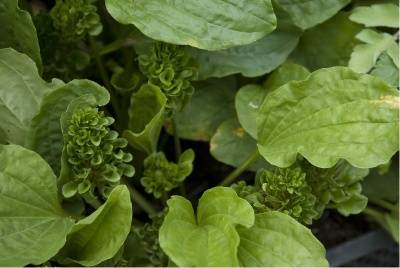

Plantain large Rosularis
Known variety with purple leaf color "Atropurpurea". It can be used along with ordinary plantain, and it looks much more impressive on the site due to the anthocyanins contained in it, which give an unusual color. And as research shows, it's even healthier than the regular green form.
And the variety "Rosularis" has bizarre inflorescences, shaped like roses.
Application in cosmetology
The average plantain is used not only in folk medicine, but also in cosmetology. The plant has an anti-inflammatory, moisturizing and tonic effect, therefore it is used to care for the skin of the face, hands and body. Plantain tincture is included in many cosmetics (creams, lotions, tonics, etc.). It is important to note that this herb is suitable for all skin types. Plantain quickly relieves inflammation, clears acne and rashes. The juice from the plant is used to cleanse dry skin. It moisturizes and nourishes her perfectly. For sensitive skin, masks based on plantain are used. They gently cleanse, nourish and tone. Girls, whose skin is prone to oily, are recommended to wipe their face with ice from a tincture of plantain. In addition, the decoction of the plant is used to moisturize and nourish dry hair.
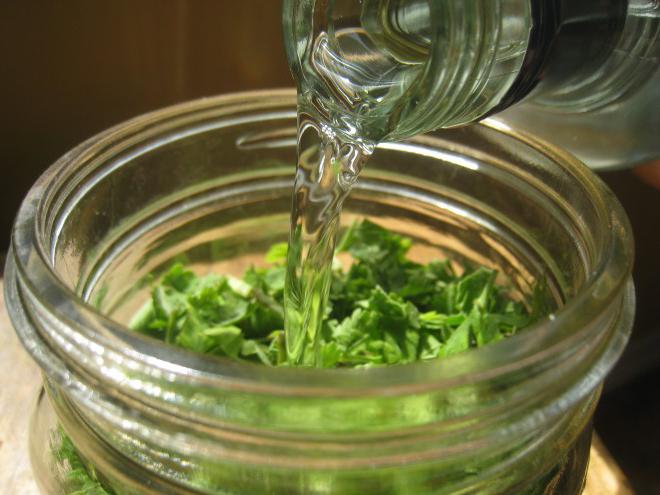

A bit of history
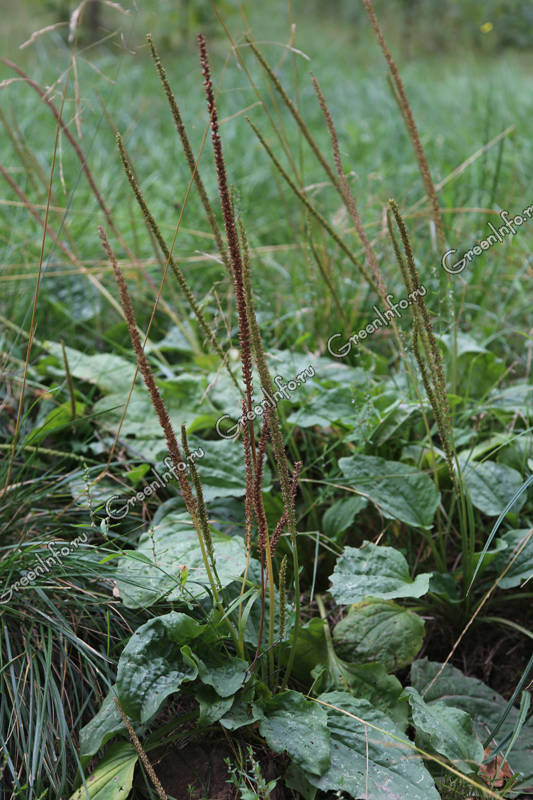

Plantain (Plantago major)
The healing properties of the plant were known to ancient Greek and Roman doctors. They prescribed plantain for many diseases. In the form of compresses, its leaves were applied to treat ulcers and abscesses, bleeding, burns, dog bites.
The juice of the leaves was buried in sore ears and eyes, and was recommended for general exhaustion of the body. Doctors of Ancient Greece treated goiter with plantain. They advised wearing a necklace of leaf bases with roots around the neck until the goiter has resolved.
Ibn Sina used the leaves of this plant as a hemostatic agent, and the seeds for hemoptysis. In addition, he successfully treated hives with plantain.
In the XII century, this plant was used in China. But in America, it appeared only with white settlers? and the Indians sometimes called it "the white man's footprint." Accordingly, the application came only after his relocation.
Collection
Plantain in June is completely saturated with nutrients and vitamins. Therefore, it is recommended to collect it during this period. Although it is worth noting that the plant is ready for use in any summer month. After collection, sorting takes place, during which damaged leaves and accidentally caught other plants are removed. After that, the plantain is to be dried. During the procedure, the grass must be protected from direct sunlight. They kill all the beneficial trace elements and vitamins in the plant. Therefore, it is dried in the open air under awnings at a temperature not higher than sixty degrees. Periodically during this procedure, the plant must be mixed. This will speed up the process of harvesting the grass.
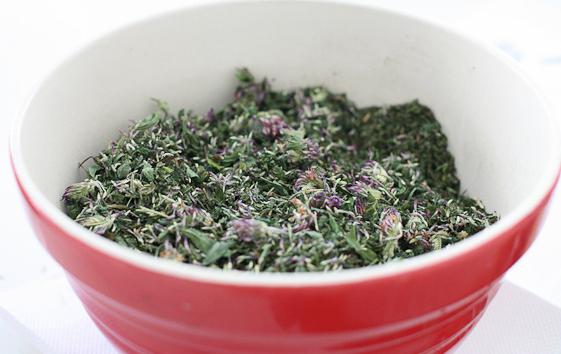

Delicious recipes
Besides the fact that plantain is used for the manufacture of medicines, delicious dishes are often prepared from it. Since there are a lot of nutrients in the leaves, food with the plant will be very useful and tasty. Here are some recipes:
- Salad. It is necessary to collect 150 g of leaves and pour over with boiling water. Chop them up and add dill, parsley and a couple of boiled eggs. Season with salt and pepper to taste and season with your favorite sauce, ketchup, mayonnaise or olive oil. Stir thoroughly - and you can serve.
- Fried potatoes with plantain. Peel and chop the potatoes and place them on the stove. At this time, chop green onions and plantains in approximately equal amounts. When the potatoes are ready, turn off the heat and sprinkle with herbs. Add cherry tomatoes before serving. They will add spice, rich taste to the dish and become a decoration of the table.
- Sandwiches. In summer, when plantain leaves are in the juice itself, you can put them on a sandwich instead of lettuce leaves. Just be sure to rinse them well and pour over them with boiling water. In winter, dried chopped raw materials can be added as spices to soups or borscht.
Importance for cosmetology
Plantain is also used in cosmetology. An ointment is made from it, which moisturizes and heals, relieves of microcracks, brings charred or chapped skin in order. To make it, you need a bunch of plantain leaves, beeswax and coconut oil.
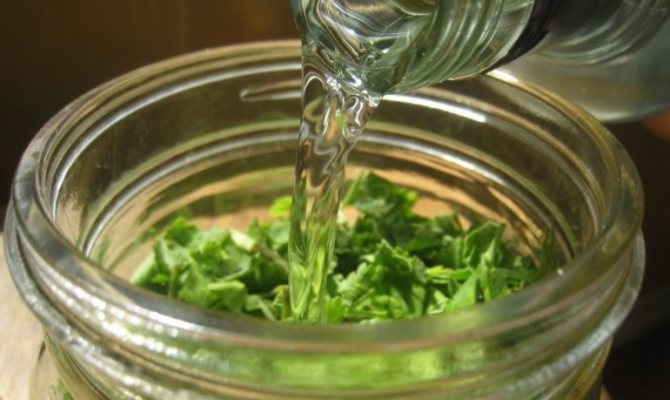

A liter jar, filled in equal parts with leaves and oil, languishes in a water bath for two hours. Then the infusion is filtered, beeswax is added to it, everything is mixed well and the ointment is ready.
Well rejuvenates and tightens the skin by rubbing with pieces of frozen plantain broth. To get rid of acne and redness, steam baths with the plant are made for the face.
Face and neck masks:
- for normal skin - boil a tablespoon of chopped plantain greens with boiling water, squeeze the juice and mix with the yolk and 20 g of sour cream. Spread this mask for twenty minutes, then rinse with warm water;
- for dry skin - heat three tablespoons of sunflower oil in a water bath, add 10 g of crushed leaves into it, boil for two minutes and add half a tablespoon of aloe juice. Cool and the mask is ready;
- for oily skin - plantain, nettle, rose hips and mint herb are steamed with boiling water and infused in a thermos for an hour. Plantain will need 2 teaspoons, rosehip and nettle - one each, mint - 0.5 teaspoon. Squeeze the steamed mixture and apply on the face and décolleté for 20 minutes and gently remove.
Plantain has found its use in cooking. Smoothies, pizzas, salads are made with it, stuffed with meat and even chips are made from the leaves of this medicinal herb.
Appearance and habitat
The plantain root is pivotal. The stem is simple, without leaves, thin, can reach a height of 15-70 cm.Leaves resemble an ellipse in shape, sinewy, collected by a basal rosette. The flowers are small, pale pink in color. They are collected at the top of the stem in a dense cylindrical spike. The fruit is a capsule. Average plantain blooms from May to August.
The plant is widespread in Europe; it is found everywhere in Russia and Ukraine. Plantain grows on the shores of lakes, rivers, in forests, near roads.
